In the ever-evolving landscape of music, certain songs transcend generations, becoming timeless anthems that resonate across cultures and eras. Recognizing this enduring power of music, Rolling Stone, a leading voice in music journalism, has consistently curated lists celebrating the greatest songs of all time. Following their landmark 2004 compilation, and a significant revamp in 2021, Rolling Stone has unveiled an updated version of their “500 Greatest Songs Of All Time” list in February 2024, reflecting the dynamic shifts in popular music and incorporating classic tracks from contemporary artists like Beyoncé, Lana Del Rey, and Taylor Swift.
This updated list, while lightly revised to include the musical contributions from 2021 to early 2024, builds upon the extensive foundation of the 2021 version, which itself was a comprehensive reboot of the original 2004 ranking. The 2021 list was the result of a substantial vote from over 300 artists, writers, producers, and industry insiders, ensuring a diverse and expert perspective on musical greatness. This latest iteration reaffirms Rolling Stone’s commitment to capturing the ever-changing tapestry of popular music, acknowledging both established classics and the burgeoning sounds of today.
The original 2004 list of the 500 Greatest Songs of All Time by Rolling Stone became one of the most widely read features in the magazine’s history, amassing hundreds of millions of views online. However, the music scene and listening habits have dramatically transformed since then. In 2004, the iPod was still a relatively novel device, and many of today’s leading artists were just beginning their musical journeys. To address this evolution, Rolling Stone undertook a complete reimagining of the list.
For this new version of the RS 500, Rolling Stone assembled a panel of over 250 artists, musicians, and producers – a diverse group ranging from Angelique Kidjo to Zedd, Sam Smith to Megan Thee Stallion, and M. Ward to Bill Ward. These experts, alongside prominent figures from the music industry, critics, and journalists, each submitted a ranked list of their top 50 songs. The results were meticulously compiled to create a refreshed and more representative ranking of the 500 greatest songs.
The sheer volume of songs considered underscores the breadth of musical excellence. Nearly 4,000 songs received votes in the process. A significant shift from the 2004 list, which heavily favored early rock and soul, this updated edition showcases a broader spectrum of genres. Listeners will find a greater representation of hip-hop, modern country, indie rock, Latin pop, reggae, and R&B, reflecting the diversifying tastes and influences shaping contemporary music. Remarkably, over half of the songs on this new list were not present in the 2004 version, and even within the Top 100, a third are entirely new entries.
The result is a more expansive and inclusive vision of popular music. This list celebrates music as a living, breathing entity, constantly rewriting its own history with every new beat, melody, and lyrical innovation. It’s a testament to the enduring power of song to shape culture, evoke emotions, and define generations.
Harry Styles, ‘As It Was’
 Harry Styles performing As It Was, highlighting the song's global popularity and chart-topping success.
Harry Styles performing As It Was, highlighting the song's global popularity and chart-topping success.
Harry Styles’ “As It Was,” the lead single from his critically acclaimed third album, immediately captivated global audiences with its blend of introspective lyrics and upbeat synth-pop melodies. This track masterfully juxtaposes an agitated inner monologue, where Styles explores the complexities of a relationship in distress, against a backdrop of shimmering, spun-sugar synths. This sonic contrast creates a captivating tension, masking the underlying torment with a veneer of pop accessibility, making it one of the greatest songs in recent years. The song opens with a playful yet poignant intro – Styles’ goddaughter Ruby’s giggle and goodnight message – which adds a layer of innocence and vulnerability before transitioning into the song’s thematic core. The lyrics delve into themes of change and longing, amplified by the song’s sing-song bridge, mirroring the rapid-fire thoughts racing through one’s mind during moments of emotional turmoil. “As It Was” paints a vivid, almost cinematic picture of a relationship in crisis, where initial appearances of normalcy gradually give way to deeper, more troubling questions, as hinted in lines like “What kind of pills are you on?”. This intricate layering of lyrical depth and sonic texture solidified “As It Was” as a defining song of its time, achieving both critical acclaim and widespread commercial success, and earning its place among the 500 greatest songs of all time.
Townes Van Zandt, ‘Pancho and Lefty’
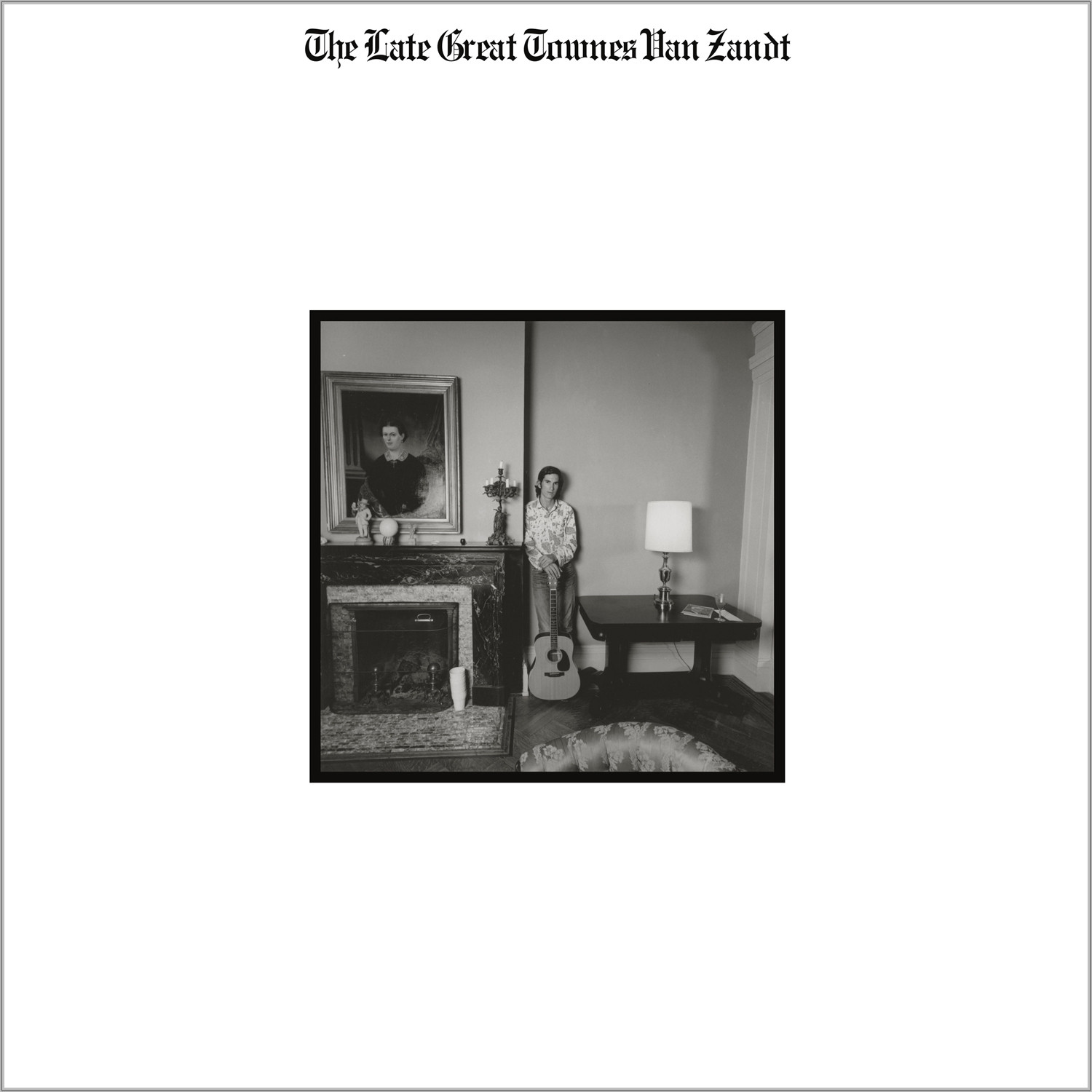 Townes Van Zandt in a contemplative pose, reflecting the somber and storytelling nature of Pancho and Lefty.
Townes Van Zandt in a contemplative pose, reflecting the somber and storytelling nature of Pancho and Lefty.
“Pancho and Lefty” stands as a towering achievement in songwriting, a narrative masterpiece penned by the legendary Townes Van Zandt. This epic story-song unfolds a poignant tale of a bandit and the friend who ultimately betrays him, exploring themes of loyalty, betrayal, and the harsh realities of life on the fringes. While “Pancho and Lefty” gained broader recognition as a country hit through Willie Nelson and Merle Haggard’s iconic 1983 duet, it is Van Zandt’s own haunting rendition, featured on his seminal 1972 album The Late Great Townes Van Zandt, that truly captures the song’s profound sense of doomed fate. Van Zandt’s version is imbued with a raw, melancholic intimacy, perfectly conveying the weariness and resignation of the characters. The song opens with what is widely considered one of the most evocative and descriptive opening verses in the country-folk genre: “Living on the road my friend/was gonna keep you free and clean/now you wear your skin like iron/your breath as hard as kerosene.” These lines immediately establish the somber tone and the hardened existence of the characters. Van Zandt himself expressed a sense of almost divine inspiration for the song, stating in 1984, “It’s hard to take credit for the writing, because it came from out of the blue.” This sense of effortless creation contributes to the song’s timeless quality and its enduring power to move listeners, securing its place among the 500 greatest songs ever recorded.
Lizzo, ‘Truth Hurts’
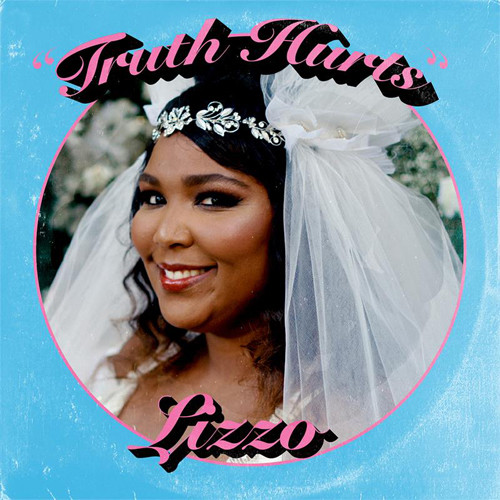 Lizzo performing Truth Hurts, showcasing her powerful stage presence and the song's anthemic quality.
Lizzo performing Truth Hurts, showcasing her powerful stage presence and the song's anthemic quality.
Lizzo’s “Truth Hurts” is more than just a breakup anthem; it’s a declaration of self-love and empowerment, delivered with Lizzo’s signature blend of swagger, humor, and soulful vocal prowess. This gale-force banger resonated deeply with audiences, becoming Lizzo’s signature hit and solidifying her status as a major force in contemporary pop music. As Lizzo herself proclaimed, “That song is my life and its words are my truth,” highlighting the personal and authentic nature of the track. While the iconic line “I just took a DNA test, turns out I’m 100 percent that bitch” originated from a tweet by British singer Mina Lioness, who was later given a writing credit, the song’s undeniable impact and infectious energy are purely Lizzo’s. “Truth Hurts” is characterized by its uproarious swagger, its unapologetic confidence, and its endearingly soulful core, making it relatable and inspiring to listeners navigating heartbreak and self-discovery. Originally released in 2017, the song experienced a significant surge in popularity in 2019 after being featured in the Netflix show Someone Great, where Gina Rodriguez’s day-drunk rendition brought it to a wider audience. This resurgence propelled “Truth Hurts” to the top of the charts and cemented its place as a modern classic, rightfully earning its spot among the 500 greatest songs of all time.
Harry Nilsson, ‘Without You’
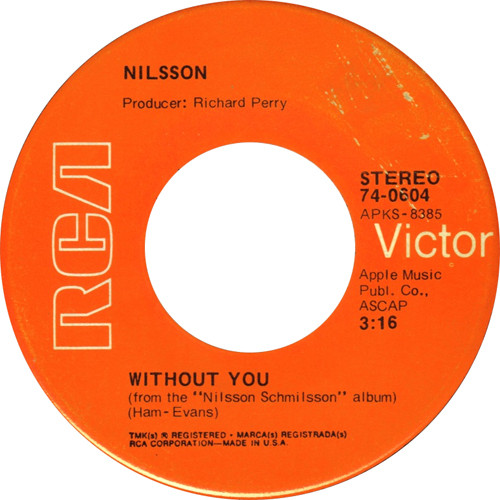 Harry Nilsson in a studio setting, capturing the vocal intensity and emotional depth of Without You.
Harry Nilsson in a studio setting, capturing the vocal intensity and emotional depth of Without You.
Harry Nilsson’s rendition of “Without You” is a masterclass in vocal performance and emotional delivery, transforming a near-despondent ballad into a soaring, heart-wrenching anthem of lost love. Originally written and performed by Badfinger, Nilsson’s version elevated the song to global superstardom, becoming a Number One hit and earning him a Grammy nomination for Record of the Year. Nilsson’s own account of recording the song reveals a pragmatic approach to achieving commercial success: “We did it because my career was on the wane and we wanted something to make a hit.” He candidly admitted to searching extensively through Beatles albums, mistakenly believing it to be one of their songs, highlighting the tune’s inherent melodic strength and Beatles-esque quality. Producer Richard Perry further amplified the song’s emotional impact by layering lush strings, creating a dramatic backdrop for Nilsson’s desperate and powerful vocal performance. Nilsson’s voice, with its raw vulnerability and soaring range, perfectly captures the pain and longing at the heart of the lyrics. The combination of Nilsson’s vocal brilliance and Perry’s production choices resulted in a timeless classic that continues to resonate with listeners, solidifying its place among the 500 greatest songs ever created.
Carly Simon, ‘You’re So Vain’
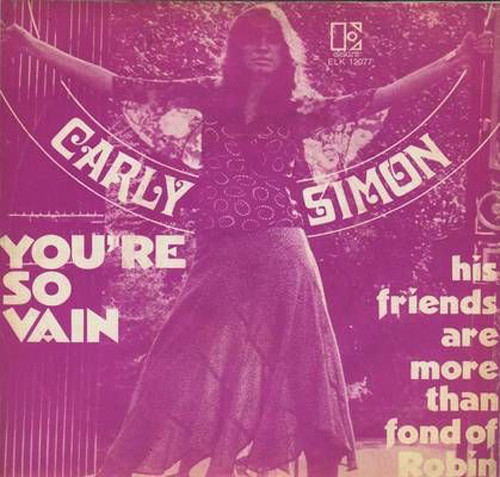 Carly Simon performing You're So Vain, emphasizing the song's enduring mystery and iconic status.
Carly Simon performing You're So Vain, emphasizing the song's enduring mystery and iconic status.
“You’re So Vain” by Carly Simon is more than just a song; it’s a cultural phenomenon, an iconic diss track shrouded in mystery and intrigue. This soft-rock masterpiece has captivated listeners for decades, fueled by the enduring question: who is the subject of Simon’s biting lyrical critique? The song has become synonymous with musical enigmas, prompting endless speculation and debate about the identity of the “vain” individual. Simon herself has revealed that actor Warren Beatty inspired the second verse (“Oh, you had me several years ago/When I was still naive”), but the identity of the primary subject remains elusive, adding to the song’s allure and longevity. Regardless of the mystery, “You’re So Vain” is a musical triumph in its own right. It boasts a sophisticated arrangement, featuring omnipresent Seventies arranger Paul Buckmaster’s lush orchestration and the unexpected addition of Mick Jagger’s background vocals, adding a layer of rock royalty to the track. The combination of Simon’s witty and cutting lyrics, the song’s infectious melody, and its stellar production has cemented “You’re So Vain” as a timeless classic and a deserving entry in the 500 greatest songs of all time.
Cyndi Lauper, ‘Time After Time’
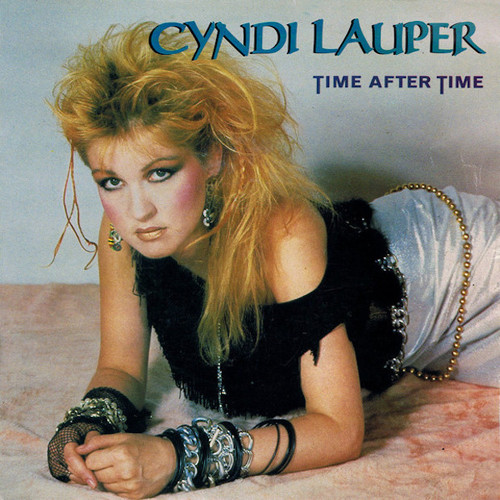 Cyndi Lauper in a vibrant performance of Time After Time, highlighting the song's emotional depth and enduring popularity.
Cyndi Lauper in a vibrant performance of Time After Time, highlighting the song's emotional depth and enduring popularity.
Cyndi Lauper’s “Time After Time” is a poignant and enduring ballad that showcases Lauper’s vocal versatility and songwriting depth, proving her range beyond the energetic pop anthems she was initially known for. This aching ballad, co-written in the studio with keyboardist Rob Hyman, was initially conceived to round out her blockbuster solo debut album, She’s So Unusual. Despite its eventual success, Lauper herself was initially hesitant about releasing “Time After Time” as a single, fearing it might misrepresent her artistic identity. “I asked them to please not put ‘Time After Time’ out as the first single,” Lauper recounted. “People would never have accepted me. If you do a ballad first, and then a rocker, that doesn’t work.” Her instincts, however, were proven wrong. Following the infectious and jaunty “Girls Just Want to Have Fun,” “Time After Time” was released as a single and became her first Number One hit, demonstrating the public’s embrace of her more introspective and vulnerable side. The song’s success lies in its emotional honesty, its relatable lyrics about enduring love and support, and Lauper’s heartfelt vocal performance. “Time After Time” has become a karaoke staple and a timeless classic, solidifying its place among the 500 greatest songs of all time.
The Pixies, ‘Where Is My Mind?’
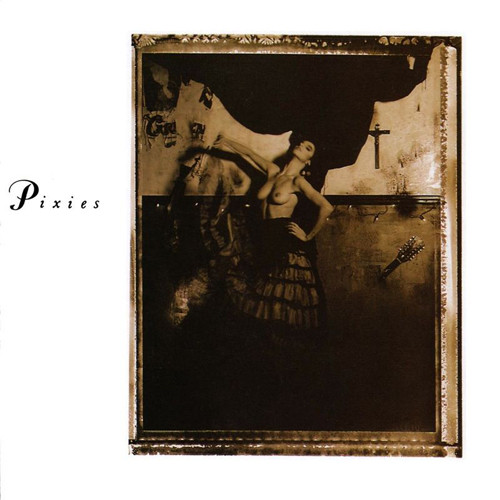 The Pixies performing Where Is My Mind?, capturing the band's raw energy and the song's iconic status in alternative music.
The Pixies performing Where Is My Mind?, capturing the band's raw energy and the song's iconic status in alternative music.
“Where Is My Mind?” by The Pixies is an enigmatic and haunting track that perfectly encapsulates the band’s signature blend of sonic dissonance and pop sensibility. This song exemplifies the “freakish pop instincts” that distinguished The Pixies within the landscape of Reagan-era bands, setting them apart with their unique and influential sound. Joey Santiago’s distinctive lead guitar riff is undeniably catchy, possessing a melodic quality that rivals many Top 40 hooks, yet retaining an edge of alternative rock innovation. While “Where Is My Mind?” gained further iconic status a decade after its release through its prominent use in the film Fight Club, it had already deeply permeated the DNA of countless alternative radio hits in the intervening years, influencing bands from Nirvana to Korn and shaping the sound of alternative music. The song’s cryptic lyrics and dreamlike atmosphere contribute to its enduring appeal and its ability to resonate with listeners on multiple levels. When questioned in a 1988 interview about his ability to consistently create great songs, Black Francis’ typically cryptic response, “It’s nice to have space. How much can one brain deal with?”, further enhances the song’s mystique and reinforces The Pixies’ unconventional genius, securing “Where Is My Mind?” a spot among the 500 greatest songs of all time.
Kanye West, ‘Stronger’
 Kanye West performing Stronger, highlighting the song's stadium-rocking energy and innovative sampling.
Kanye West performing Stronger, highlighting the song's stadium-rocking energy and innovative sampling.
Kanye West’s “Stronger” is a groundbreaking track that marked a significant evolution in his sound, showcasing his ambition to create stadium-ready anthems while pushing the boundaries of hip-hop production. Featured on his third album, Graduation, “Stronger” embodies West’s desire to create songs with a broader, more impactful reach, inspired by his touring experiences with rock giants U2 and the Rolling Stones. As West explained, “I applied a lot of the things I learned on tour [in 2006] with U2 and the Rolling Stones, about songs that rock stadiums. And they worked!” The song’s grandiose and powerful sound is directly attributed to its innovative sampling of Daft Punk’s “Harder, Better, Faster, Stronger,” which West skillfully reshaped and transformed into the backbone of his own track. This sample choice not only demonstrated West’s eclectic musical taste but also his ability to bridge genres and create something entirely new and impactful. West’s admiration for Daft Punk extends beyond their music; he lauded their commitment to anonymity, stating, “These guys really stick with the whole not-showing-their-faces thing. Just amazing discipline — that’s straight martial-arts status.” “Stronger” became a defining song of its era, showcasing West’s musical innovation and solidifying his status as a visionary artist, earning its place amongst the 500 greatest songs.
Miles Davis, ‘So What’
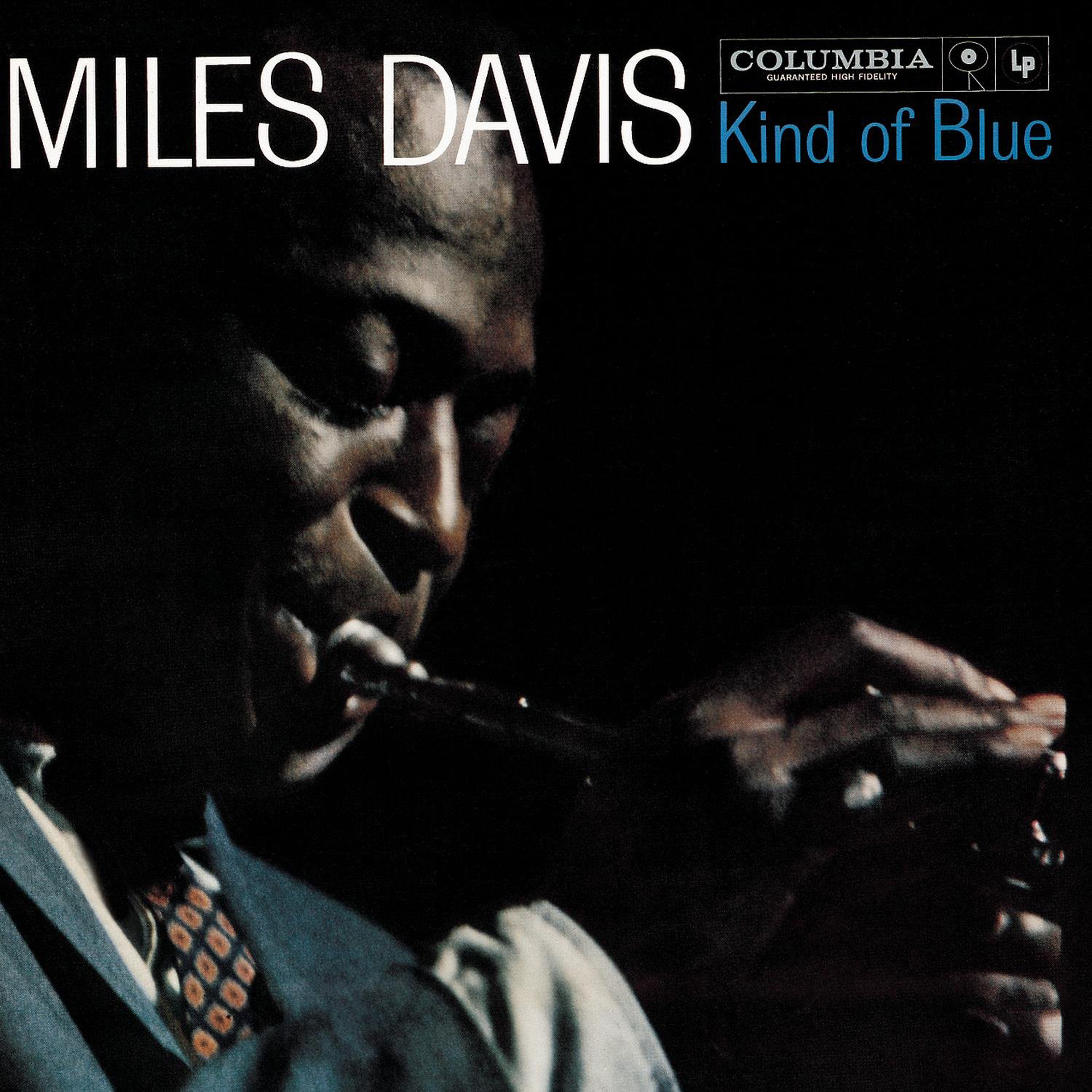 Miles Davis playing trumpet in a live jazz setting, emphasizing the improvisational and groundbreaking nature of So What.
Miles Davis playing trumpet in a live jazz setting, emphasizing the improvisational and groundbreaking nature of So What.
Miles Davis’ “So What” is a jazz masterpiece that transcends genre boundaries, becoming not only a cornerstone of jazz music but also a cultural touchstone, often soundtracking sophisticated gatherings and symbolizing cool, improvisational artistry. As the opening track of the seminal album Kind of Blue, “So What” marked a significant departure from the bebop chord changes prevalent in jazz at the time, embracing a more open-ended modal style. This modal approach allowed for greater improvisational freedom and a more spacious, atmospheric sound, revolutionizing jazz composition and performance. According to pianist Bill Evans, Davis developed the musical material for “So What” just hours before the recording session, highlighting the spontaneous and collaborative nature of the recording process. Despite its seemingly impromptu creation, the all-star band, featuring jazz luminaries John Coltrane and Cannonball Adderley on saxophones, and the rhythm section of Evans, bassist Paul Chambers, and drummer Jimmy Cobb, sounds remarkably cohesive and deeply connected to the music. Coltrane and Adderley’s solos on “So What” have become as iconic and studied as any in jazz history, exemplifying the modal approach and showcasing their individual brilliance. The rhythm section’s effortless swing and interplay further contribute to the song’s timeless appeal and its enduring legacy as one of the 500 greatest songs of all time.
Bad Bunny, ‘Titi Me Pregunto’
 Bad Bunny performing Titi Me Pregunto, capturing his energetic stage presence and the song's vibrant Latin rhythms.
Bad Bunny performing Titi Me Pregunto, capturing his energetic stage presence and the song's vibrant Latin rhythms.
Bad Bunny’s “Tití Me Preguntó” is a vibrant showcase of the Puerto Rican superstar’s boundless creativity and eccentric pop genius, seamlessly blending diverse musical elements into a global mainstream hit. This track exemplifies Bad Bunny’s innovative approach to music, effortlessly mixing frantic dembow beats, a sophisticated sample from bachata legend Anthony Santos, and a coda infused with Latin psychedelia. He navigates these diverse sounds with panache and a playful sense of humor, creating a song that is both sonically adventurous and immediately engaging. The song’s lyrical concept is equally inventive, using the archetype of the concerned Latin American aunt inquiring about her nephew’s romantic prospects as a starting point. From this relatable premise, Bad Bunny launches into a hilarious and often salacious tirade filled with puns and double entendres, all delivered over a bouncy party vibe. In typical Bad Bunny fashion, the song unexpectedly shifts into moments of moody self-reflection, adding depth and complexity to its seemingly lighthearted surface. “Tití Me Preguntó” demonstrates Bad Bunny’s ability to fuse traditional Latin sounds with contemporary pop sensibilities, resulting in a song that is both culturally rich and globally appealing, rightfully earning its place among the 500 greatest songs of all time.
Lil Nas X, ‘Old Town Road’
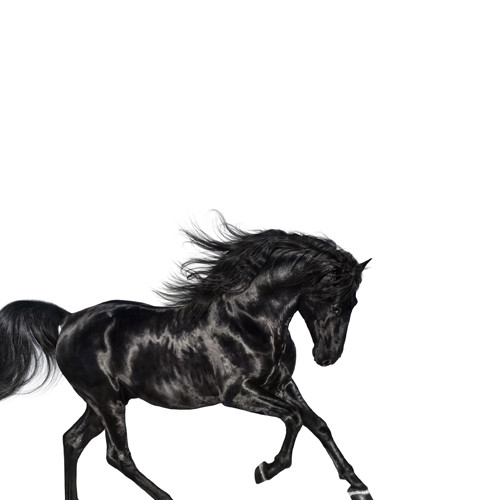 Lil Nas X performing Old Town Road, emphasizing the song's viral success and cultural impact.
Lil Nas X performing Old Town Road, emphasizing the song's viral success and cultural impact.
“Old Town Road” by Lil Nas X is a genre-bending phenomenon that defied expectations and shattered records, becoming the longest-running Number One song of all time and a cultural touchstone of the digital age. The song’s improbable journey to global dominance began with Montero Hill, then an Atlanta college dropout residing on his sister’s couch, seeking a breakthrough in the music industry. He discovered a track by Dutch producer YoungKio, built around a banjo sample from a Nine Inch Nails song, and immediately envisioned a unique musical fusion. “I was picturing, like, a loner cowboy runaway,” Lil Nas X explained to Rolling Stone, capturing the song’s core imagery and thematic essence. This vision coalesced into “Old Town Road,” a track that seemingly encapsulated centuries of American cross-cultural exchange and appropriation within a concise one minute and 53 seconds. The song’s viral success was fueled by its catchy melody, its meme-ability, and its embrace of internet culture. “Old Town Road” transcended genre classifications, blending elements of country, hip-hop, and pop, and sparked widespread conversations about genre boundaries and the evolving landscape of music consumption. Its unprecedented chart performance and cultural impact cemented its status as a defining song of its era and a deserving inclusion in the 500 greatest songs of all time.
The Breeders, ‘Cannonball’
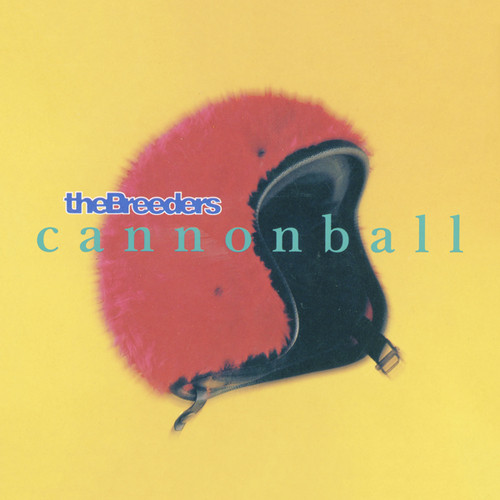 The Breeders performing Cannonball, capturing the song's playful energy and iconic 90s alternative rock vibe.
The Breeders performing Cannonball, capturing the song's playful energy and iconic 90s alternative rock vibe.
The Breeders’ “Cannonball” is an absurdist gem of 90s alternative rock that became an MTV phenomenon, showcasing Kim Deal’s songwriting prowess and the band’s effortlessly cool and playful energy. Emerging from the ashes of Kim Deal’s departure from the Pixies, The Breeders were initially perceived by some as a side project. However, “Cannonball”‘s massive success proved otherwise. After receiving a fax informing her of her dismissal from the Pixies, Kim Deal enlisted her twin sister, Kelley, to play guitar, despite Kelley’s lack of experience. This unconventional approach mirrored the band’s overall ethos and contributed to their unique sound. “Cannonball” became an instant hit, propelled by its infectious energy, its quirky lyrics, and its iconic music video. As Kelley Deal humorously recalled, “When people were talking about the Breeders being a one-off, I was like ‘No, actually … the Pixies are a side project.'” While The Breeders themselves went on an extended hiatus shortly after their initial success, the enduring appeal of “Cannonball” remains undeniable. The song’s “effortlessly fun trampoline bounce,” as described by Rolling Stone, captures the spirit of 90s alternative rock and continues to resonate with listeners, securing its place among the 500 greatest songs of all time.
The Weeknd, ‘House of Balloons’
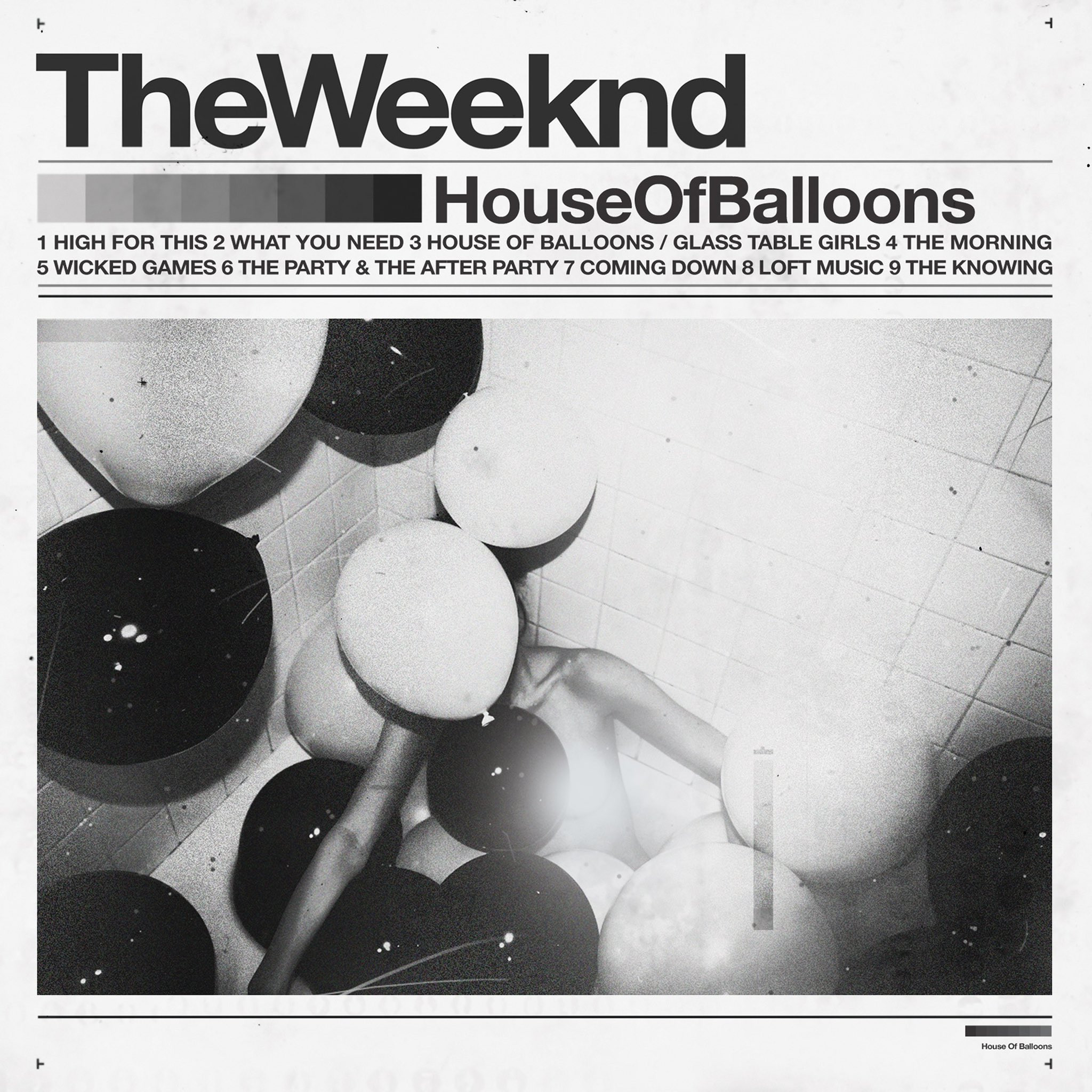 The Weeknd in an early performance, capturing the enigmatic and atmospheric vibe of House of Balloons.
The Weeknd in an early performance, capturing the enigmatic and atmospheric vibe of House of Balloons.
“House of Balloons/Glass Table Girls” by The Weeknd is a groundbreaking track that established Abel Tesfaye’s signature sound and thematic preoccupations, marking the arrival of a major force in contemporary R&B. In the early stages of his career, The Weeknd cultivated an enigmatic persona, releasing his music anonymously and avoiding interviews and photos. “The whole ‘enigmatic artist’ thing, I just ran with it,” Tesfaye explained. “No one could find pictures of me. It reminded me of some villain shit.” This mystique only amplified the impact of his music, particularly the title track of his debut mixtape, House of Balloons. “House of Balloons/Glass Table Girls” set the thematic and musical template for The Weeknd’s career, exploring themes of hedonism, drug use, and emotional darkness against a backdrop of innovative and atmospheric production. The song’s sampling of Siouxsie and the Banshees’ “Happy House” was particularly significant, signaling a new direction for R&B by incorporating elements of post-punk and new wave into its sonic palette. This genre-bending approach, combined with Tesfaye’s distinctive vocals and introspective lyrics, established The Weeknd as a unique and influential artist, making “House of Balloons/Glass Table Girls” a seminal track and a deserving inclusion in the 500 greatest songs of all time.
Solange, ‘Cranes in the Sky’
 Solange Knowles in a still from the Cranes in the Sky music video, highlighting the song's visual and thematic richness.
Solange Knowles in a still from the Cranes in the Sky music video, highlighting the song's visual and thematic richness.
Solange’s “Cranes in the Sky” is a deeply introspective and artistically ambitious song that explores themes of change, self-doubt, and aspiration with profound lyrical depth and lush neo-soul production. In a conversation with her sister Beyoncé, Solange revealed the song’s inspiration, drawing a parallel between personal struggles and the overzealous real estate development she observed in Miami. “This idea of building up, up, up that was going on in our country at the time, all of this excessive building, and not really dealing with what was in front of us,” Solange explained, highlighting the metaphorical connection between external landscape and internal emotional state. She turned this metaphor inward, using it to examine her own feelings about personal transformation, self-doubt, and the pursuit of dreams. “Cranes in the Sky” was years in the making, evolving over time and ultimately 완성된 with producer Raphael Saadiq, resulting in a lavish and richly textured moment of neo-soul introspection. The song’s sonic landscape is as evocative as its lyrics, creating a space for contemplation and emotional release. “Cranes in the Sky” is a testament to Solange’s artistic vision and her ability to craft music that is both deeply personal and universally resonant, securing its place among the 500 greatest songs of all time.
Lil Wayne, ‘A Milli’
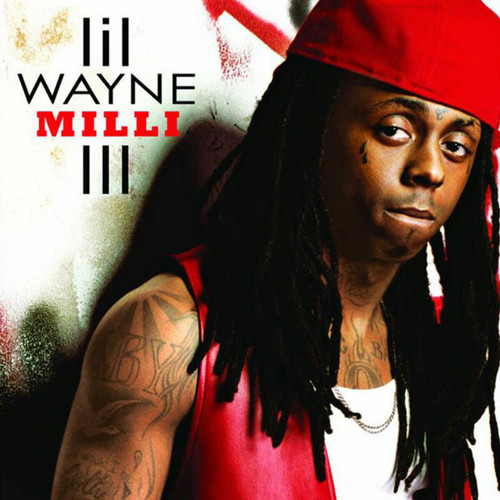 Lil Wayne in a recording studio, capturing the raw energy and lyrical dexterity of A Milli.
Lil Wayne in a recording studio, capturing the raw energy and lyrical dexterity of A Milli.
Lil Wayne’s “A Milli” is a lyrical tour-de-force, showcasing his unparalleled rapping abilities and solidifying his status as one of hip-hop’s most gifted and influential MCs. The track’s minimalist yet potent beat, crafted by producer Bangladesh, is built around a looped sample of Gladys Knight and the Pips’ “Don’t Burn Down the Bridge,” transitioning into a hard-hitting volley of trap drums. Bangladesh initially offered the beat to singer Shanell from Wayne’s Young Money Entertainment, intending for her to pass it along. Wayne initially envisioned “A Milli” as a collaborative project, planning to use the instrumental for skits featuring various rappers from his YMCMB roster, including Tyga, Hurricane Chris, Corey Gunz, and Lil Mama. However, in the end, “A Milli” became solely Lil Wayne’s domain, providing a platform for him to unleash his lyrical prowess in its purest form. Wayne “blacked out in the booth,” delivering a dazzling display of complex rhyme schemes, intricate wordplay, and relentless energy. “A Milli” is a masterclass in rapping, stripping away any distractions and focusing solely on Wayne’s verbal dexterity and flow. This raw, unfiltered showcase of his talent cemented “A Milli” as an instant classic and a deserving inclusion in the 500 greatest songs of all time.
Azealia Banks, ‘212’
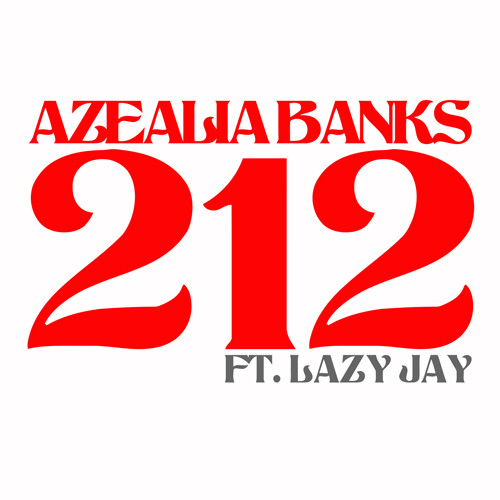 Azealia Banks performing 212, capturing her fierce energy and the song's groundbreaking hip-house sound.
Azealia Banks performing 212, capturing her fierce energy and the song's groundbreaking hip-house sound.
Azealia Banks’ “212” is a groundbreaking hip-house banger that announced the arrival of a fiercely independent and provocateur artist, pushing genre boundaries and establishing Banks as a force to be reckoned with. In 2011, Azealia Banks was a young rapper-singer with undeniable talent, having secured a development deal with XL Recordings but still seeking her breakthrough moment. Producer Jacques Greene recalled discovering a Dutch house-sounding track that he deemed “absolutely insane,” recognizing its potential to be something truly unique. Banks seized the opportunity, freestyling ferociously over the jittery beats of Belgian house duo Lazy Jay’s “Float My Boat.” Her lyrics, celebrating her New York hometown and incorporating sexually explicit content, were delivered with unmatched confidence and energy. “212,” initially released as a viral track online, quickly gained momentum, becoming a hip-house anthem that defied categorization and captured the zeitgeist. The song’s success earned Banks a deal with Interscope Records and served notice that this “uninhibited provocateur” would not be confined by genre conventions or expectations. “212” remains a defining track in the hip-house genre and a testament to Azealia Banks’ bold artistry, securing its place among the 500 greatest songs of all time.
Weezer, ‘Buddy Holly’
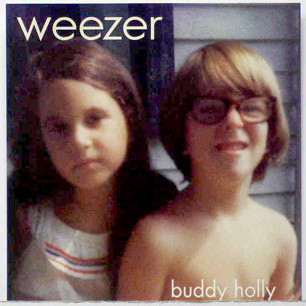 Weezer performing Buddy Holly, highlighting the song's nerdy charm and iconic 90s alternative rock aesthetic.
Weezer performing Buddy Holly, highlighting the song's nerdy charm and iconic 90s alternative rock aesthetic.
Weezer’s “Buddy Holly” is a quintessential 90s alternative rock anthem that celebrates geek chic and nerdy romance with infectious pop hooks and self-deprecating charm. This breakout single from their self-titled debut album, also known as the Blue Album, became an instant classic and cemented Weezer’s place in popular music. Written for frontman Rivers Cuomo’s girlfriend, “Buddy Holly” is a poppy ode to awkward yet endearing romance. Despite its eventual success, the song was almost omitted from the Blue Album due to concerns from Cuomo and then-member Matt Sharp. “We had the sense that it could be taken as a novelty song, and people aren’t going to take the album seriously,” Sharp told Rolling Stone. However, producer Ric Ocasek recognized the song’s undeniable appeal after hearing the recording studio receptionist humming it and insisted on its inclusion. “Buddy Holly” is characterized by its catchy melody, its relatable lyrics about overcoming social awkwardness in love, and its iconic music video, which seamlessly integrated Weezer into footage from the classic sitcom Happy Days. The song’s blend of nerdy sincerity and pop sensibility resonated with audiences, making “Buddy Holly” a defining track of the 90s and a deserving inclusion in the 500 greatest songs of all time.
The Four Tops, ‘I Can’t Help Myself (Sugar Pie, Honey Bunch)’
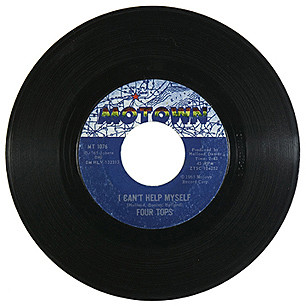 The Four Tops performing I Can't Help Myself, capturing the song's high-energy Motown sound and infectious enthusiasm.
The Four Tops performing I Can't Help Myself, capturing the song's high-energy Motown sound and infectious enthusiasm.
“I Can’t Help Myself (Sugar Pie, Honey Bunch)” by The Four Tops is a quintessential Motown anthem, radiating infectious energy, soulful vocals, and irresistible pop hooks. This rousing track became one of Motown’s most enduring hits, showcasing the Four Tops’ signature blend of smooth harmonies and Levi Stubbs’ powerful lead vocals. The song’s playful and endearing title and lyrical concept were inspired by songwriter Lamont Dozier’s grandfather, who affectionately called the women his hairdresser wife styled “sugar pie” and “honey bunch.” This familial inspiration translated into a song that is both joyous and deeply romantic. During the recording session, engineer Harold Taylor recalled the studio’s atmosphere: “People were banging on the door of the studio; they were so ecstatic about what they heard.” Despite the immediate enthusiasm, lead singer Levi Stubbs, ever the perfectionist, requested another take. Brian Holland, confident in the first performance, promised they would record another soon, but Stubbs’ initial take proved to be the definitive version, hitting Number One and solidifying “I Can’t Help Myself” as a Motown classic and a deserving inclusion in the 500 greatest songs of all time.
Lady Gaga, ‘Bad Romance’
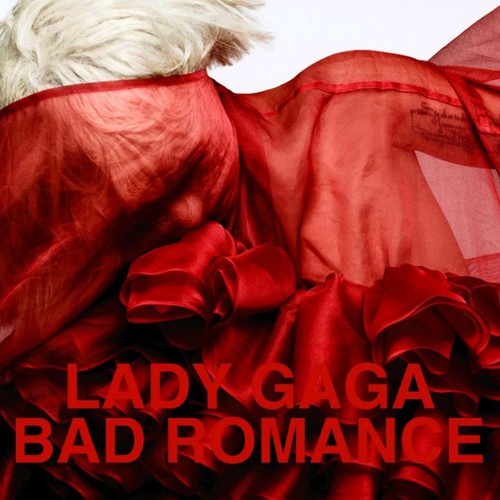 Lady Gaga performing Bad Romance, highlighting the song's theatricality, avant-garde style, and global pop dominance.
Lady Gaga performing Bad Romance, highlighting the song's theatricality, avant-garde style, and global pop dominance.
Lady Gaga’s “Bad Romance” is a transformative pop masterpiece that catapulted her to a new level of artistic eccentricity and solidified her status as a global pop icon. Following her initial breakthrough success, “Bad Romance” marked a significant evolution in Gaga’s sound and visual aesthetic, embracing a darker, more avant-garde sensibility. Produced by Nadir “RedOne” Khayat, “Bad Romance” drew inspiration from the electronic music Gaga immersed herself in while touring Europe, resulting in a track that is both intensely danceable and sonically adventurous. Gaga herself described the song’s underlying theme as a desire for profound and all-encompassing love, even the darker aspects of it. “I want the deepest, darkest, sickest parts of you that you are afraid to share with anyone because I love you that much,” she explained, capturing the song’s dramatic and unconventional romanticism. Fittingly, Gaga debuted the song at Alexander McQueen’s show during Paris Fashion Week, further emphasizing its connection to high fashion and avant-garde artistry. “Bad Romance” is characterized by its theatricality, its bold electronic production, its iconic music video, and Gaga’s powerful vocals, making it a defining pop song of the 21st century and a deserving inclusion in the 500 greatest songs of all time.
Robert Johnson, ‘Cross Road Blues’
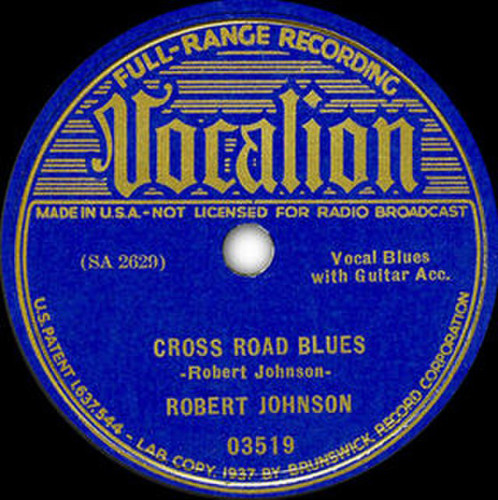 Robert Johnson in a classic blues portrait, emphasizing the mystique, intensity, and legendary status of Cross Road Blues.
Robert Johnson in a classic blues portrait, emphasizing the mystique, intensity, and legendary status of Cross Road Blues.
Robert Johnson’s “Cross Road Blues” is a foundational blues recording, imbued with primal terror, mystifying guitar work, and the enduring legend of a deal with the devil. This track, recorded in a San Antonio hotel room in 1936, just two years before Johnson’s tragic death at age 27, has profoundly influenced generations of musicians, particularly the British rockers of the 1960s. Eric Clapton famously described the song’s intense impact: “I could take the music only in very small measures because it was so intense.” Johnson’s voice conveys a raw, visceral emotion, while his slide guitar playing is both technically brilliant and deeply expressive, contributing to the song’s mystique and power. “Cross Road Blues” is a mythmaking statement of spiritual desolation and betrayal, evoking a sense of profound despair and existential angst. While the legend of Johnson selling his soul to the devil at a crossroads in exchange for his extraordinary musical talent is likely apocryphal, it has become inextricably linked to “Cross Road Blues,” further enhancing its legendary status. Regardless of its factual basis, the myth speaks to the song’s otherworldly quality and its profound impact on music history, solidifying its place among the 500 greatest songs of all time.
Biz Markie, ‘Just a Friend’
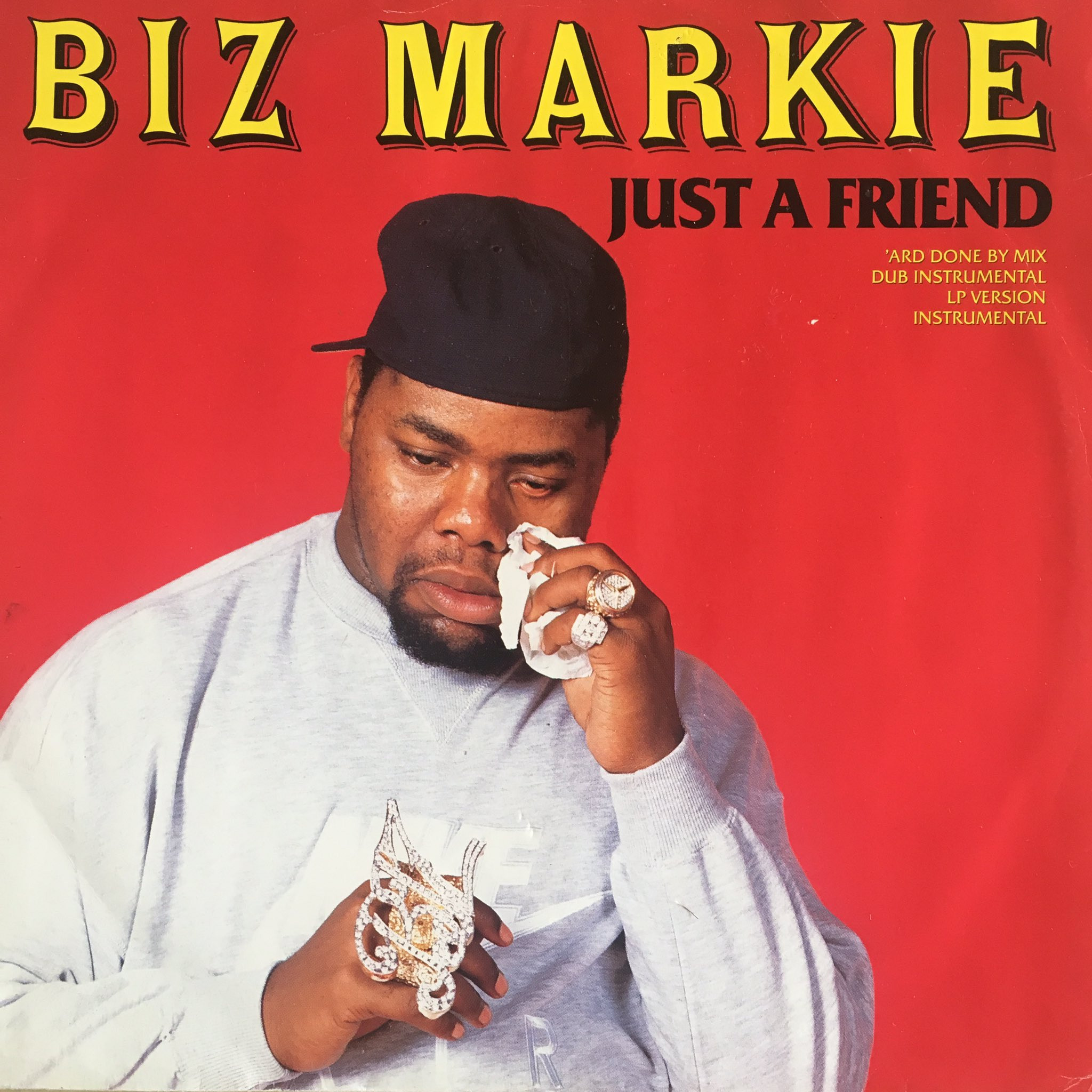 Biz Markie performing Just a Friend, capturing his playful personality and the song's lighthearted, friend-zone anthem vibe.
Biz Markie performing Just a Friend, capturing his playful personality and the song's lighthearted, friend-zone anthem vibe.
Biz Markie’s “Just a Friend” is a uniquely charming and humorous hip-hop classic that celebrates the friend zone with infectious good nature and endearingly off-key vocals. Biz Markie, known for his impossibly good-natured personality and multifaceted talents as a DJ, rapper, producer, and human beatboxer, achieved mainstream success with this ode to unrequited love from his second album. “Just a Friend” is built around a fat beat, plinking piano chords, and Biz Markie’s intentionally off-key singing, creating a deliberately amateurish yet undeniably catchy sound. The song interpolates Freddie Scott’s 1968 track “(You) Got What I Need,” using its familiar melody as a foundation for Biz Markie’s comedic and relatable lyrics about romantic frustration. The song’s inspiration was drawn from Biz Markie’s real-life experience with a woman from Los Angeles. As he told Rolling Stone in 2000, “I was talking to this girl from L.A., and every time I called her, this dude was at her house, and she’d say, ‘Oh, he’s just a friend.’ I hated that.” This relatable scenario, combined with Biz Markie’s playful delivery and the song’s catchy simplicity, made “Just a Friend” a crossover hit and a beloved party anthem, securing its place among the 500 greatest songs of all time.
Santana, ‘Oye Como Va’
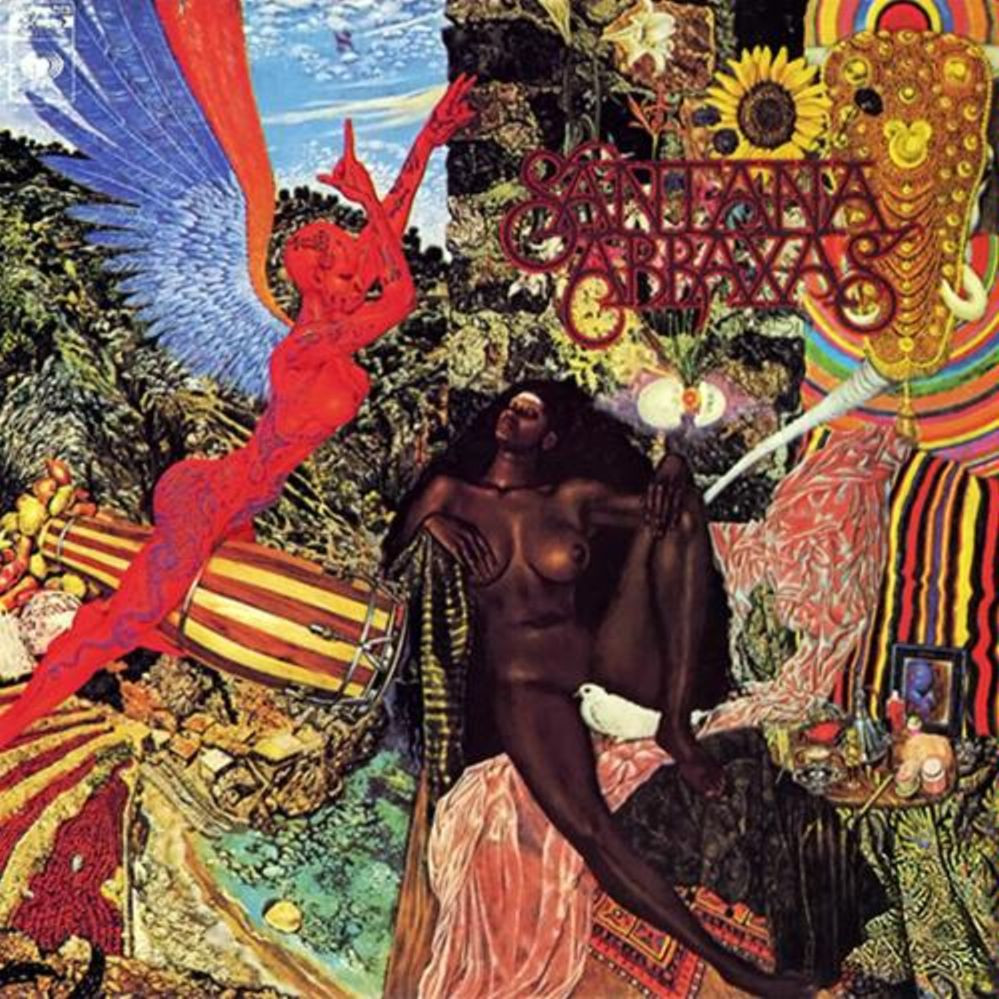 Carlos Santana performing Oye Como Va, highlighting the song's Latin rock fusion and Santana's iconic guitar style.
Carlos Santana performing Oye Como Va, highlighting the song's Latin rock fusion and Santana's iconic guitar style.
Santana’s “Oye Como Va” is a groundbreaking Latin rock fusion track that brought the sounds of salsa and psychedelia together, introducing Latin rhythms and Santana’s signature guitar style to a global audience. Growing up in San Francisco during the city’s psychedelic explosion, Carlos Santana was profoundly influenced by the era’s counterculture and musical experimentation. “You cannot take LSD and not find your voice,” he once famously claimed, highlighting the transformative impact of psychedelic experiences on his artistic development. While his early musical influences were rooted in blues, Santana revolutionized his sound by incorporating Latin rhythms and instrumentation. “Oye Como Va” is a masterful reworking of a 1962 salsa number by Cuban percussionist Tito Puente. Santana retained the original’s cha-cha pulse but replaced its horn section with Greg Rolie’s organ and Santana’s own lysergic guitar flares, creating a unique and instantly recognizable sound. Tito Puente himself acknowledged Santana’s profound impact on popularizing Latin music, stating years later, “He put our music, Latin rock, around the world, man.” “Oye Como Va” became Santana’s signature song and a defining track in the Latin rock genre, earning its place among the 500 greatest songs of all time.
Juvenile feat. Lil Wayne and Mannie Fresh, ‘Back That Azz Up’
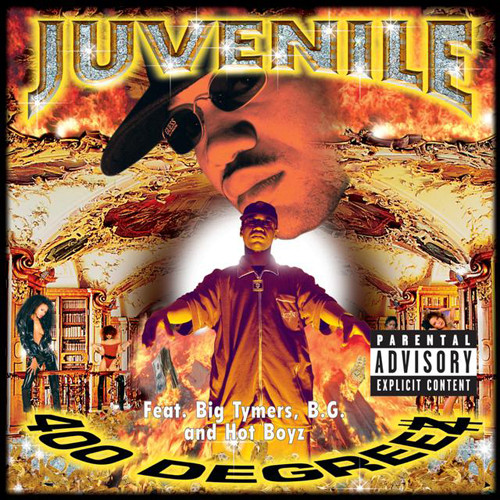 Juvenile, Lil Wayne, and Mannie Fresh performing Back That Azz Up, capturing the song's New Orleans bounce energy and hip-hop party anthem vibe.
Juvenile, Lil Wayne, and Mannie Fresh performing Back That Azz Up, capturing the song's New Orleans bounce energy and hip-hop party anthem vibe.
“Back That Azz Up” by Juvenile featuring Lil Wayne and Mannie Fresh is a definitive New Orleans bounce anthem that put the city’s hip-hop scene on the national map, characterized by its infectious energy, diamond-sharp production, and explicit lyrical content. In the late 1990s, Mannie Fresh’s innovative productions for Cash Money Records played a crucial role in establishing New Orleans as a major hip-hop center. “Back That Azz Up” became a defining track of this era, showcasing the city’s unique bounce sound. The song’s title was intentionally reminiscent of local artist DJ Jubilee’s single “Back That Thang Up,” leading to an unsuccessful lawsuit for copyright infringement. The beat itself is built upon the “Triggerman” rhythm, a foundational element of New Orleans bounce music. Juvenile’s verses feature his signature shit-talking bounce rhymes, while Lil Wayne delivers a memorable “drop it like it’s hot” hook, further enhancing the song’s party anthem vibe. Mannie Fresh himself recognized the immediate impact of Wayne’s contribution, stating, “[He] immediately was just like, ‘Shit, I’m getting a piece of this.’” “Back That Azz Up” became a cultural phenomenon, celebrated for its raw energy, its unapologetic sexuality, and its representation of New Orleans hip-hop culture, securing its place among the 500 greatest songs of all time.
The Go-Go’s, ‘Our Lips Are Sealed’
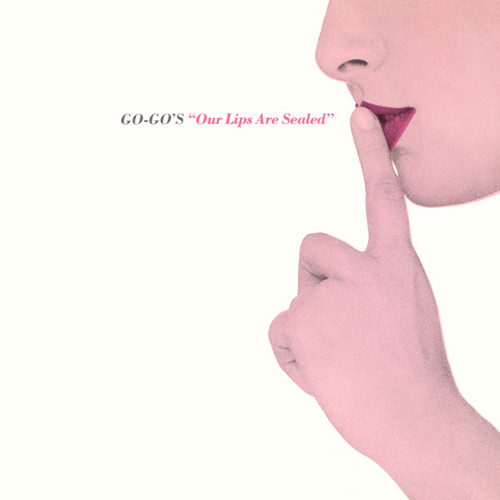 The Go-Go's performing Our Lips Are Sealed, capturing the song's new wave pop charm and girl-group influences.
The Go-Go's performing Our Lips Are Sealed, capturing the song's new wave pop charm and girl-group influences.
“Our Lips Are Sealed” by The Go-Go’s is a radiant new wave pop hit that perfectly blends girl-group charm with edgy new wave sensibilities, becoming the band’s first major hit and a defining song of the early 1980s. According to songwriter Jane Wiedlin, the song’s musical influences included “the Buzzcocks and Sixties girl-group stuff,” reflecting its fusion of punk-inspired energy and classic pop melodicism. The song’s lyrical inspiration stemmed from a clandestine relationship Wiedlin was having with Terry Hall of the U.K. ska group The Specials. Hall received a co-writing credit for “Our Lips Are Sealed” because Wiedlin based the lyrics on poetry he had written to her in a letter. “It was pretty personal,” Wiedlin recalled. “I mean he had a fiancee at the time — nowadays I wouldn’t touch that with a 10-foot pole, but I was 19, and I was like ‘fiancee shmiancee.’” This personal context adds a layer of intrigue to the song’s themes of secrecy and forbidden romance. “Our Lips Are Sealed” is characterized by its catchy melody, its driving rhythm, and Belinda Carlisle’s distinctive vocals, making it a quintessential new wave pop anthem and a deserving inclusion in the 500 greatest songs of all time.
Kris Kristofferson, ‘Sunday Mornin’ Comin’ Down’
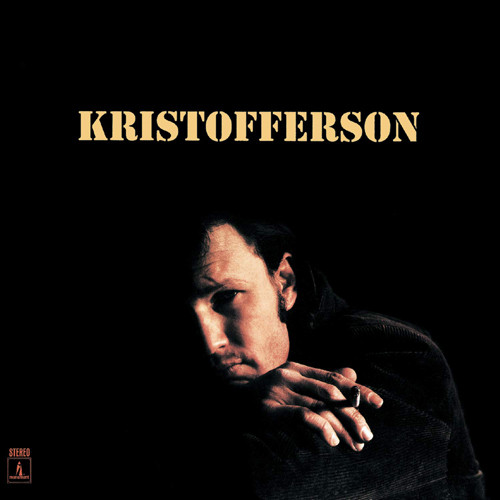 Kris Kristofferson performing Sunday Mornin' Comin' Down, capturing the song's raw emotion and country-folk storytelling.
Kris Kristofferson performing Sunday Mornin' Comin' Down, capturing the song's raw emotion and country-folk storytelling.
Kris Kristofferson’s “Sunday Mornin’ Comin’ Down” is a deeply poignant and emotionally raw country-folk ballad that explores themes of loneliness, hangover, and spiritual desolation with unflinching honesty. The song’s profound sense of despair is so palpable that it can be almost тяжело to listen to, yet it is precisely this emotional weight that drew Johnny Cash to perform it on his TV variety show in 1970. Cash’s performance brought widespread attention to the song and solidified its status as a country classic. Kristofferson himself recorded a stunning studio version of “Sunday Mornin’ Comin’ Down” that same year for his debut album, Kristofferson. While Cash’s interpretation is arguably more shuffling and accessible to a wider audience, Kristofferson’s own version is imbued with a raw intimacy that intensifies the song’s emotional impact. Listening to both versions back-to-back reveals the subtle nuances and shared emotional core of this powerful song. Kristofferson’s lyrics about being hungover, alone, and desperate are delivered with a stark realism that resonates deeply with listeners, making “Sunday Mornin’ Comin’ Down” a timeless masterpiece and a deserving inclusion in the 500 greatest songs of all time.
Janet Jackson, ‘Rhythm Nation’
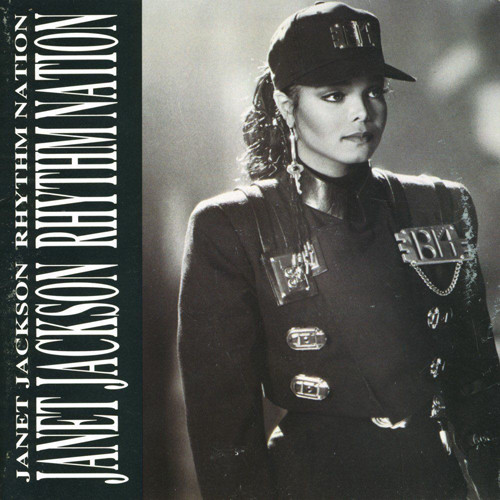 Janet Jackson performing Rhythm Nation, highlighting the song's socially conscious message and iconic choreography.
Janet Jackson performing Rhythm Nation, highlighting the song's socially conscious message and iconic choreography.
Janet Jackson’s “Rhythm Nation” is a socially conscious and musically innovative hit that seamlessly blends dance-pop energy with a powerful message of unity and social awareness. This Number Two hit emerged late in the recording sessions for her blockbuster album Rhythm Nation 1814, solidifying the album’s thematic depth and artistic ambition. Co-producer Jimmy Jam recalled the song’s genesis, describing being in the studio and “switching between MTV and CNN. Watching music videos on one side and watching atrocities on the other. Somehow they all merged together. The idea for ‘Rhythm Nation’ was you can dance, but we can also do something more intelligent.” This fusion of entertainment and social commentary became the song’s defining characteristic. The musical inspiration for “Rhythm Nation” struck when Jam heard Sly and the Family Stone’s “Thank You (Falettinme Be Mice Elf Agin)” in a restaurant. He immediately recognized its rhythmic potential and raced to the studio to sample it, creating the song’s iconic and driving beat. “Rhythm Nation” is characterized by its sharp choreography, its militaristic visual aesthetic, and its powerful message of unity and social justice, making it a landmark pop song and a deserving inclusion in the 500 greatest songs of all time.
Curtis Mayfield, ‘Move On Up’
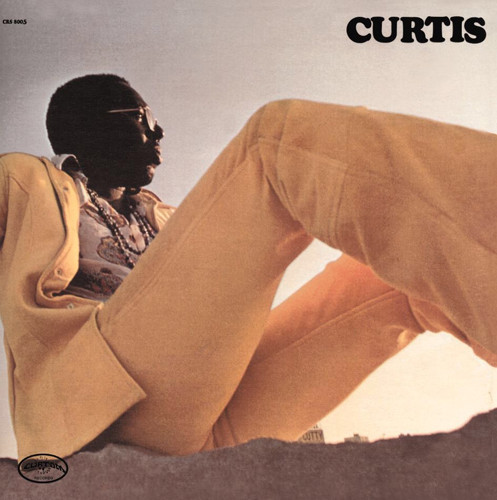 Curtis Mayfield performing Move On Up, capturing the song's uplifting energy and socially conscious message.
Curtis Mayfield performing Move On Up, capturing the song's uplifting energy and socially conscious message.
Curtis Mayfield’s “Move On Up” is an anthem of empowerment and social uplift, musically irresistible and lyrically profound, urging listeners to strive for progress and dignity. This track is politically empowering, morally demanding, and effortlessly propulsive, driven by swinging horns, tangy congas, and Mayfield’s soulful vocals. The extended nine-minute LP version, featuring a powerful drum break, laid a foundational blueprint for both disco and hip-hop, demonstrating the song’s far-reaching influence. Mayfield’s message in “Move On Up” is steadfast and clear: pride and dignity are paramount for Black Americans to achieve equality and rise above systemic oppression. “I’m not trying to say anything to make you think, ‘Well, this is the way, this is the only way,’” Mayfield explained. “I’m trying to cover the whole subject.” “Move On Up” transcends simple protest music, offering a message of hope, resilience, and collective action. Its uplifting energy, combined with its powerful social message and musical innovation, secures its place among the 500 greatest songs of all time.
Tammy Wynette, ‘Stand by Your Man’
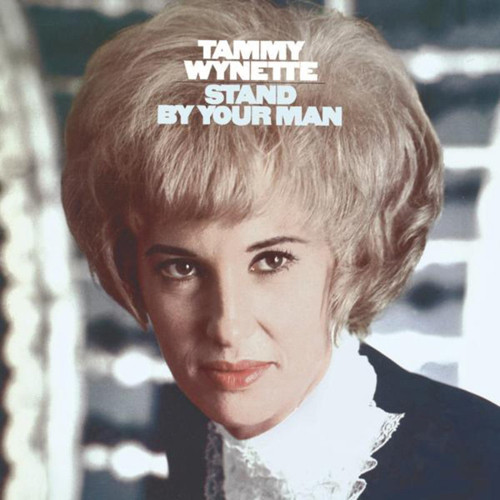 Tammy Wynette performing Stand by Your Man, highlighting the song's emotional power and controversial themes.
Tammy Wynette performing Stand by Your Man, highlighting the song's emotional power and controversial themes.
Tammy Wynette’s “Stand by Your Man” is a country music classic that has become a cultural lightning rod, sparking both fervent admiration and তীব্র criticism for its depiction of wifely devotion. From its inception, this pledge of unwavering fidelity, the first song Wynette ever co-wrote, ignited passionate debate. Feminist critics in the 1970s recoiled from its seemingly unquestioning endorsement of female subservience, while Hillary Clinton famously distanced herself from the song during Bill Clinton’s first presidential campaign to emphasize her modern feminist identity. However, despite the ideological controversies surrounding its lyrics, the recording itself possesses an undeniable emotional power. The catch in Wynette’s voice during the verses builds to a vocal swell that matches the epic sweep of Billy Sherrill’s production, creating a dramatic and emotionally resonant listening experience. “Stand by Your Man” transcends simple ideological interpretations, becoming a complex and enduring song that continues to provoke discussion and elicit strong reactions, securing its place among the 500 greatest songs of all time.
Peter Gabriel, ‘Solsbury Hill’
 Peter Gabriel performing Solsbury Hill, capturing the song's introspective mood and folk-rock instrumentation.
Peter Gabriel performing Solsbury Hill, capturing the song's introspective mood and folk-rock instrumentation.
Peter Gabriel’s “Solsbury Hill” is a deeply personal and musically uplifting song that chronicles his departure from Genesis and his embrace of a solo career, becoming an anthem of self-discovery and personal liberation. Shortly after his departure from Genesis in 1975, Gabriel climbed to the summit of Little Solsbury Hill in Somerset, England, seeking solitude and reflection on his life-altering decision. This experience inspired “Solsbury Hill,” his debut solo song, in which he directly addressed fans, explaining his need to forge his own artistic path. Musically, “Solsbury Hill” represented a significant departure from Genesis’ prog-rock sound. It is a pastoral tune characterized by its 12-string acoustic guitar lead, creating a folk-rock texture that was pointedly different from his previous band’s elaborate arrangements. The song’s uplifting melody and lyrics about personal transformation have made it ubiquitous in movies and film trailers, further cementing its cultural resonance. Gabriel himself has acknowledged the song’s pervasive presence in popular culture, admitting to Rolling Stone in 2011, “Maybe I’ve let it go too much.” Despite its ubiquity, “Solsbury Hill” remains a powerful and enduring song, capturing the universal experience of personal change and earning its place among the 500 greatest songs of all time.
The Animals, ‘The House of the Rising Sun’
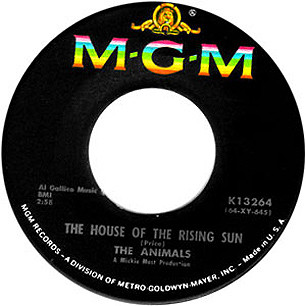 The Animals performing The House of the Rising Sun, capturing the song's blues-rock intensity and Eric Burdon's powerful vocals.
The Animals performing The House of the Rising Sun, capturing the song's blues-rock intensity and Eric Burdon's powerful vocals.
The Animals’ “The House of the Rising Sun” is a blues-rock adaptation of a traditional folk ballad that transformed the song into a global hit, showcasing Eric Burdon’s powerful vocals and the band’s raw energy. As Animals singer Eric Burdon explained, “We were looking for a song that would grab people’s attention.” They found it in “The House of the Rising Sun,” an old American folk ballad with a long and varied history. Bob Dylan had recorded a version of the grim tale of a Southern woman trapped in a New Orleans brothel in 1962. The Animals, hailing from the English coal town of Newcastle, made a significant change by switching the gender in the lyrics, adapting the narrative to a male perspective. Keyboardist Alan Price created the song’s new arrangement, which became its defining feature, and controversially claimed composer’s credit. Price also added an organ solo inspired by Jimmy Smith’s hit “Walk on the Wild Side,” further enhancing the song’s blues-rock sound. The Animals’ version of “The House of the Rising Sun” became an international sensation, propelled by Burdon’s impassioned vocals, Price’s iconic organ riff, and the song’s dramatic narrative, securing its place among the 500 greatest songs of all time.
Gladys Knight and the Pips, ‘Midnight Train to Georgia’
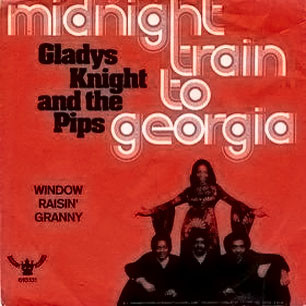 Gladys Knight and the Pips performing Midnight Train to Georgia, highlighting the song's soulful vocals and poignant storytelling.
Gladys Knight and the Pips performing Midnight Train to Georgia, highlighting the song's soulful vocals and poignant storytelling.
“Midnight Train to Georgia” by Gladys Knight and the Pips is a soulful and emotionally resonant ballad that tells a poignant story of dreams, heartbreak, and the pull of home. Songwriter Jim Weatherly initially composed the song as “Midnight Plane to Houston,” but changed it for Cissy Houston (Whitney’s mother) to something “more R&B … in order to get it onto Black radio.” This adaptation reflected the evolving sound of R&B and its growing popularity. Weatherly had previously penned “Neither One of Us,” another hit for Gladys Knight and the Pips, establishing a successful songwriting partnership. When Gladys Knight and the Pips heard “Midnight Train,” they recognized its potential and transformed it into a Number One hit. Weatherly himself admitted, “I never really imagined writing R&B songs. I really thought I was writing country songs,” highlighting the song’s genre-bending appeal. “Midnight Train to Georgia” resonated deeply with audiences, reflecting the demographic shifts of the 1970s, the first decade since World War I where more African Americans were moving to the South than leaving it. The song’s soulful vocals, its relatable narrative of pursuing dreams and returning home, and its timeless melody have made it a classic and a deserving inclusion in the 500 greatest songs of all time.
Dixie Chicks, ‘Goodbye Earl’
 The Dixie Chicks performing Goodbye Earl, capturing the song's dark humor and feminist twist on the murder ballad genre.
The Dixie Chicks performing Goodbye Earl, capturing the song's dark humor and feminist twist on the murder ballad genre.
“Goodbye Earl” by the Dixie Chicks is a murder ballad with a darkly humorous and feminist twist, sparking both controversy and widespread acclaim for its unconventional approach to a sensitive topic. This jaunty song tells the story of two women who take revenge on an abusive husband by poisoning him, subverting the traditional murder ballad narrative with a modern, female perspective. “Goodbye Earl” elicited disparate reactions upon its release. Some radio stations banned the song, fearing it might incite violence against abusive spouses. Others, recognizing its message of empowerment and solidarity, shared hotline numbers for domestic abuse victims alongside airplay. Despite the controversy, “Goodbye Earl” became a signature song for the Dixie Chicks and a cultural touchstone for discussions about domestic violence and female agency. When record label representatives initially listened to the Dixie Chicks’ Fly album, they expressed more concern about another song, “Sin Wagon,” with its suggestive lyrics. Natalie Maines recalled their manager relaying the label executives’ message: “You can’t say [that], but they love the song about premeditated first-degree murder.” This ironic contrast highlights the song’s subversive humor and its willingness to challenge societal norms. “Goodbye Earl” remains a powerful and thought-provoking song, securing its place among the 500 greatest songs of all time.
Mazzy Star, ‘Fade Into You’
 Mazzy Star performing Fade Into You, capturing the song's dream pop atmosphere and Hope Sandoval's ethereal vocals.
Mazzy Star performing Fade Into You, capturing the song's dream pop atmosphere and Hope Sandoval's ethereal vocals.
Mazzy Star’s “Fade Into You” is a quintessential dream pop track, characterized by its hazy atmosphere, Hope Sandoval’s ethereal vocals, and a sense of blurry, melancholic desire. Singer Hope Sandoval and guitarist David Roback, the creative core of Mazzy Star, emerged from the 1980s neo-psychedelic Paisley Underground scene in Los Angeles, reflecting their shared musical roots in psychedelic and alternative rock. After Sandoval replaced Kendra Smith as the vocalist in the band Opal, Roback and Sandoval reformed the group under the name Mazzy Star. Their second album yielded “Fade Into You,” which became their signature song and a defining track of the dream pop genre. “Fade Into You” is characterized by its slow tempo, its shimmering guitars, Sandoval’s breathy and introspective vocals, and a general sense of hazy introspection. As Roback explained, “We’re not so concerned about the outside world. [Each song] is its own world unto itself.” This inward focus and the song’s dreamy sonic landscape have made “Fade Into You” a timeless classic and a deserving inclusion in the 500 greatest songs of all time.
Nirvana, ‘Come as You Are’
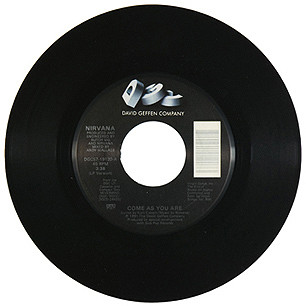 Nirvana performing Come as You Are, capturing the band's grunge energy and Kurt Cobain's iconic presence.
Nirvana performing Come as You Are, capturing the band's grunge energy and Kurt Cobain's iconic presence.
Nirvana’s “Come as You Are” is a grunge anthem that encapsulates the band’s signature blend of raw energy, introspective lyrics, and Kurt Cobain’s enigmatic persona. The song’s seemingly simple structure and cryptic lyrics belie its deeper exploration of identity, expectation, and contradiction. As Kurt Cobain explained, “It’s just about people and what they’re expected to act like. The lines in the song are really contradictory. They’re kind of a rebuttal to each other.” The song’s iconic riff, though simple, is instantly recognizable and powerfully effective. Producer Butch Vig enhanced the riff with a flanged, subaquatic guitar effect, adding to the song’s distinctive sonic texture. Cobain reportedly borrowed the riff from a 1984 song by U.K. art-metal band Killing Joke, a musical debt that Dave Grohl later acknowledged by drumming on Killing Joke’s 2003 album. In the tragic aftermath of Cobain’s suicide, the lyric “And I swear that I don’t have a gun” took on a particularly haunting and poignant resonance, adding another layer of complexity to the song’s interpretation. “Come as You Are” remains a defining track of the grunge era and a testament to Nirvana’s enduring influence, securing its place among the 500 greatest songs of all time.
Luther Vandross, ‘Never Too Much’
 Luther Vandross performing Never Too Much, capturing the song's smooth R&B groove and Vandross's velvety vocals.
Luther Vandross performing Never Too Much, capturing the song's smooth R&B groove and Vandross's velvety vocals.
Luther Vandross’ “Never Too Much” is a buoyant and romantic R&B classic that launched his solo career and established him as the preeminent male R&B balladeer of the 1980s. Vandross’ solo debut was partially financed by earnings from singing jingles for KFC and 7UP, highlighting his diverse musical background before achieving solo stardom. Roberta Flack played a pivotal role in encouraging Vandross to pursue his own artistic vision. As Vandross recounted, “She said, ‘Luther, you’re too comfortable sitting on that stool singing “ooh and aaah.”‘ Roberta was single-handedly responsible for me starting my own career.” Flack’s encouragement was spurred by hearing the demo of “Never Too Much,” recognizing its immense potential. “Never Too Much” is characterized by its upbeat tempo, its infectious groove, and Vandross’s velvety smooth vocals. His high notes, described as “delicate as soap bubbles,” perfectly complement the song’s romantic lyrics and joyful energy. “Never Too Much” became an instant classic, solidifying Vandross’ status as a solo artist and earning its place among the 500 greatest songs of all time.
Daft Punk feat. Pharrell Williams, ‘Get Lucky’
 Daft Punk and Pharrell Williams performing Get Lucky, capturing the song's disco revival vibe and global dance-pop success.
Daft Punk and Pharrell Williams performing Get Lucky, capturing the song's disco revival vibe and global dance-pop success.
“Get Lucky” by Daft Punk featuring Pharrell Williams is a disco-infused dance-pop phenomenon that revived the disco sound for a new generation and became a global chart-topper. When Pharrell Williams offered to collaborate with Daft Punk on their fourth album, he mentioned his musical admiration for Chic legend Nile Rodgers. Fortuitously, Daft Punk played Williams a track they had already created with Rodgers himself, leading to the creation of “Get Lucky.” The song became the lead single from their disco-inspired album Random Access Memories and quickly ascended to become the defining song of its year. “Get Lucky” is characterized by its infectious groove, its Nile Rodgers’ signature guitar riffs, Pharrell Williams’ smooth vocals, and Daft Punk’s impeccable production. The song’s retro-futuristic vibe and its celebration of dance and connection resonated with audiences worldwide. As Williams himself observed, “I think the robots are leading. Daft Punk, they’re definitely leading.” “Get Lucky” became a cultural phenomenon, sparking a renewed interest in disco music and cementing Daft Punk’s status as innovators and trendsetters, earning its place among the 500 greatest songs of all time.
Joni Mitchell, ‘Help Me’
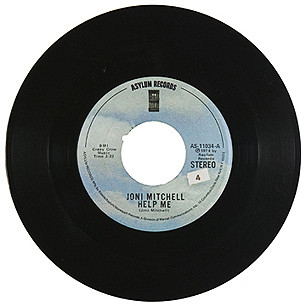 Joni Mitchell performing Help Me, highlighting the song's sophisticated jazz-pop sound and Mitchell's emotive vocals.
Joni Mitchell performing Help Me, highlighting the song's sophisticated jazz-pop sound and Mitchell's emotive vocals.
Joni Mitchell’s “Help Me” is a sophisticated and emotionally nuanced jazz-pop masterpiece that showcases Mitchell’s vocal prowess and her meticulous approach to musical arrangement. Featured on her best-selling album Court and Spark, “Help Me” exemplifies Mitchell’s increasing control over her musical direction and her embrace of jazz influences. Mitchell explained her hands-on approach to the album’s creation: “I guided everything into place on Court and Spark — even though I didn’t play it, I sang it, and then they played it from that, and it was pretty much as writ.” This meticulousness resulted in an album that is both commercially successful and artistically ambitious. “Help Me,” recorded with the jazz group Tom Scott’s L.A. Express, features one of Mitchell’s sultriest and most expressive vocal performances, complemented by lush and intricate arrangements. The song’s sophisticated jazz-pop sound and its lyrical exploration of romantic vulnerability have made it a timeless classic. Prince, a known admirer of Mitchell’s work, paid lyrical tribute to “Help Me” in his song “Ballad of Dorothy Parker” 13 years later, further solidifying its influence and legacy, and earning its place among the 500 greatest songs of all time.
John Lee Hooker, ‘Boom Boom’
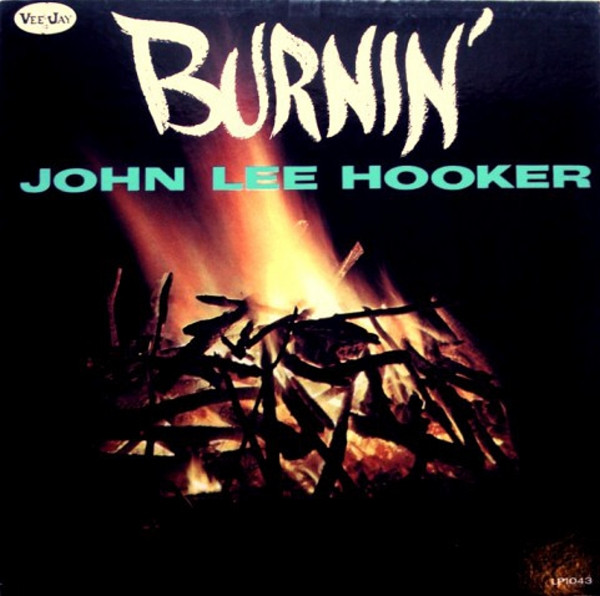 John Lee Hooker performing Boom Boom, capturing the song's raw blues boogie energy and Hooker's distinctive guitar style.
John Lee Hooker performing Boom Boom, capturing the song's raw blues boogie energy and Hooker's distinctive guitar style.
John Lee Hooker’s “Boom Boom” is a swinging, swaggering blues boogie classic that exemplifies Hooker’s distinctive guitar style and his canny ability to create primal, rhythmically driven blues. Hooker himself attributed the song’s inspiration to his chronic lateness for a regular gig. He recounted the story of Luilla, a bartender at the Apex Bar in Detroit: “There was a young lady named Luilla. She was a bartender [at the Apex Bar in Detroit]. I’d always be late, and whenever I’d come in she’d point at me and say, ‘Boom Boom, you’re late again.’ One night she said, ‘Boom boom, I’m gonna shoot you down.’ She gave me a song, but she didn’t know it.” This everyday anecdote transformed into a blues anthem, characterized by its driving rhythm, its simple yet effective lyrics, and Hooker’s signature boogie groove. Keith Richards famously quipped about Hooker’s raw and elemental style, “Even Muddy Waters was sophisticated next to him.” This was intended as a compliment, highlighting Hooker’s unique and primal approach to the blues. “Boom Boom” became one of Hooker’s most recognizable songs and a foundational track in blues and early rock & roll, securing its place among the 500 greatest songs of all time.
Van Morrison, ‘Into the Mystic’
 Van Morrison performing Into the Mystic, capturing the song's ethereal mood and Morrison's soulful vocals.
Van Morrison performing Into the Mystic, capturing the song's ethereal mood and Morrison's soulful vocals.
Van Morrison’s “Into the Mystic” is a soulfully sung and exquisitely arranged masterpiece, often considered Morrison’s definitive song, evoking a sense of nostalgia, longing, and spiritual yearning. This highlight from his classic 1970 album Moondance benefits from a more organic and collaborative recording approach. Morrison explained, “It was more like working with an actual band rather than a bunch of session guys,” highlighting the importance of band interplay in shaping the song’s sound. “Into the Mystic” is characterized by its lush instrumentation, its ethereal atmosphere, and Morrison’s transportive vocals, creating a dreamlike and deeply moving listening experience. Regarding the song’s lyrical meaning, Morrison himself admitted, “So many of my songs from that Seventies period, I haven’t a clue what they’re about. A lot of the time, I was just picking up on a vibe.” This sense of intuitive creation contributes to the song’s mystical and enigmatic quality. “Into the Mystic” remains a timeless and universally beloved song, celebrated for its beauty, its emotional depth, and its ability to transport listeners to another realm, securing its place among the 500 greatest songs of all time.
Roy Orbison, ‘Crying’
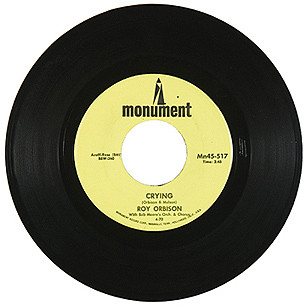 Roy Orbison performing Crying, highlighting the song's operatic vocals and emotional intensity.
Roy Orbison performing Crying, highlighting the song's operatic vocals and emotional intensity.
Roy Orbison’s “Crying” is a lush and dramatic ballad that showcases Orbison’s unparalleled vocal range and his ability to convey profound emotion through song. Orbison stated that he wrote “Crying” after encountering a former love, reflecting on the lingering pain of past relationships. “Whether I was physically crying or just crying inside is the same thing,” he explained, highlighting the song’s exploration of inner emotional turmoil. Orbison’s performance is near-operatic, culminating in a soaring, wailing high note that became his vocal signature. Bob Dylan famously described Orbison’s vocal delivery in Chronicles: “He sounded like he was singing from an Olympian mountaintop and he meant business. He was now singing his compositions in three or four octaves that made you want to drive your car over a cliff. He sang like a professional criminal.” This dramatic description captures the intensity and emotional power of Orbison’s voice on “Crying.” The song’s lush orchestration and Orbison’s heart-wrenching vocal performance have made it a timeless classic and a deserving inclusion in the 500 greatest songs of all time.
Steel Pulse, ‘Ku Klux Klan’
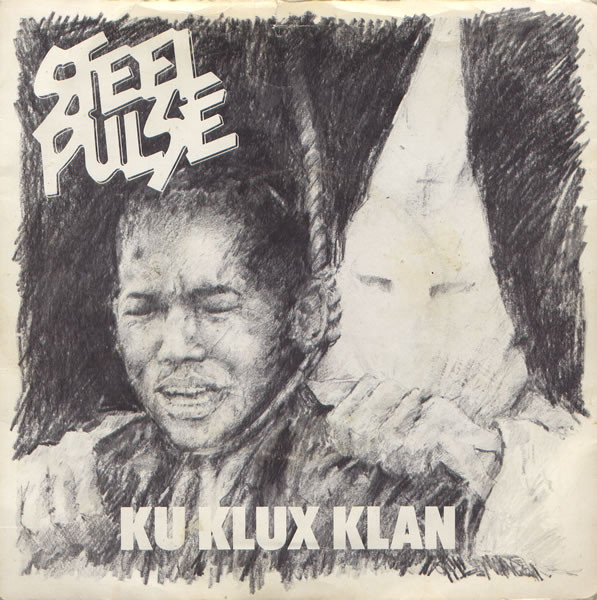 Steel Pulse performing Ku Klux Klan, capturing the song's reggae protest message and the band's bold stage presence.
Steel Pulse performing Ku Klux Klan, capturing the song's reggae protest message and the band's bold stage presence.
Steel Pulse’s “Ku Klux Klan” is an incendiary reggae protest song that directly confronts racism and racial violence, marking the debut of the first great British reggae band on Island Records. The song addresses the rising tide of racist violence in late-Seventies Britain with unflinching directness: “The Ku Klux Klan/Here to stamp out Black man.” To amplify the song’s message, Steel Pulse controversially performed it live, including a memorable BBC appearance, while wearing white Klan headgear. Vocalist Michael Riley explained the band’s provocative stage choice: “The hoods seemed extreme at the time, but that’s what we are in a way. When we wore them, people started questioning what the song was about instead of just dancing to it.” This deliberate act of provocation successfully drew attention to the song’s powerful message and sparked important conversations about racism. “Ku Klux Klan” is a bold and necessary protest song, showcasing Steel Pulse’s songwriting prowess and their commitment to social justice through music, securing its place among the 500 greatest songs of all time.
Sade, ‘No Ordinary Love’
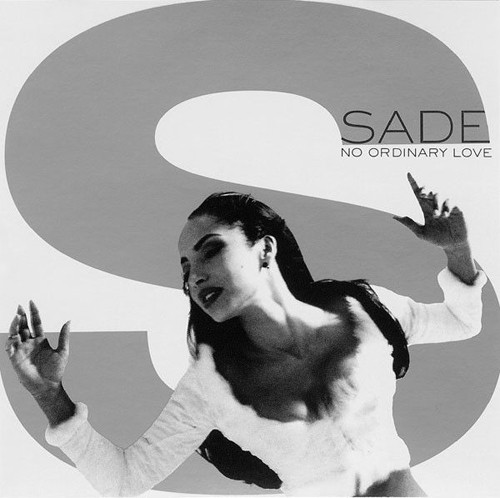 Sade performing No Ordinary Love, highlighting the song's smooth jazz-soul vibe and Sade Adu's distinctive vocals.
Sade performing No Ordinary Love, highlighting the song's smooth jazz-soul vibe and Sade Adu's distinctive vocals.
Sade’s “No Ordinary Love” is a sophisticated and emotionally resonant jazz-soul ballad that showcases Sade Adu’s understated vocal delivery and the band’s signature smooth and atmospheric sound. Sade Adu’s vocal style, characterized by its small but fully inhabited range, is her defining strength. “I decided that if I was gonna sing, I would sing how I speak, because it’s important to be yourself,” she explained, emphasizing the authenticity and naturalness of her vocal approach. In “No Ordinary Love,” her voice cracks with emotion before reaching the first chorus, adding to the song’s romantic drama and vulnerability. Stuart Matthewman’s guitar work further enhances the song’s mood, adding a low-key noisy and atmospheric element to the otherwise mellow groove. “No Ordinary Love” exemplifies Sade’s signature sound, blending elements of jazz, soul, and R&B into a sophisticated and timeless style. The song’s understated elegance, its emotional depth, and Sade Adu’s distinctive vocals have made it a classic and a deserving inclusion in the 500 greatest songs of all time. Sade is not just the singer’s name, but also the name of the band, underscoring the collaborative nature of their music.
Beck, ‘Loser’
 Beck performing Loser, capturing the song's slacker anthem vibe and 90s alternative rock sound.
Beck performing Loser, capturing the song's slacker anthem vibe and 90s alternative rock sound.
Beck’s “Loser” is a slacker anthem that defined a generation and launched Beck’s career, characterized by its lo-fi production, its absurdist lyrics, and its genre-bending sound. In 1992, Beck Hansen was a struggling video-store clerk performing bizarro folk songs in Los Angeles coffeehouses. “Loser” was recorded in his producer’s kitchen on a whim. Despite its humble origins, the song became a surprise hit and the centerpiece of his album Mellow Gold. Initially, some perceived “Loser” as a novelty hit, but Beck recognized its deeper resonance. “You’d have to be a total idiot to say, ‘I’m the slacker-generation guy. This is my generation.… we’re not gonna fuckin’ show up,'” he stated, rejecting the simplistic label of “slacker anthem.” “Loser” is characterized by its unconventional sound, blending folk, hip-hop, and alternative rock elements. Its absurdist lyrics, its catchy chorus, and its lo-fi aesthetic resonated with a generation disillusioned with mainstream culture. “Loser” became a defining song of the 90s alternative rock scene and a testament to Beck’s unique artistic vision, securing its place among the 500 greatest songs of all time.
Bon Jovi, ‘Livin’ on a Prayer’
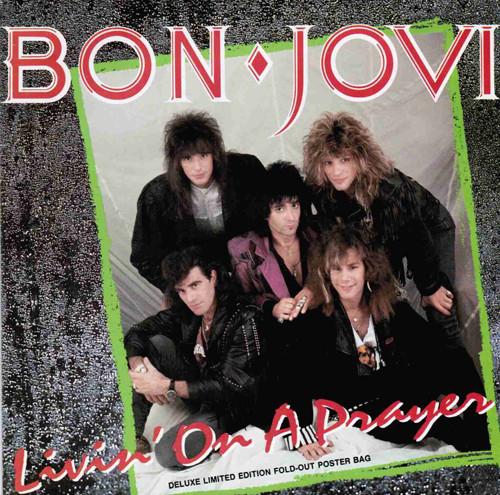 Bon Jovi performing Livin' on a Prayer, capturing the song's stadium rock energy and working-class anthem vibe.
Bon Jovi performing Livin' on a Prayer, capturing the song's stadium rock energy and working-class anthem vibe.
Bon Jovi’s “Livin’ on a Prayer” is a stadium rock anthem that celebrates working-class struggles and resilience, becoming one of the band’s most enduring and beloved songs. Like his New Jersey compatriot Bruce Springsteen, Bon Jovi often focuses on the lives and experiences of working-class heroes and heroines. “Livin’ on a Prayer,” co-written with guitarist Richie Sambora, elevates the everyday struggles of fictional characters Tommy and Gina to epic proportions. The song is characterized by its anthemic chorus, its guitar-pick slides, its dramatic pauses, and its signature key change, all contributing to its stadium-rock grandeur. “Livin’ on a Prayer” continues to resonate with audiences decades after its release, transcending generations and cultures. Bon Jovi himself reflected on the song’s enduring appeal in 2005: “It’s great that we wrote songs so long ago that people can still relate to. When I hear ‘Livin’ on a Prayer,’ I think to myself, ‘We wrote that. That song has really made its mark. I guess that works.’” “Livin’ on a Prayer” is a testament to the power of anthemic rock and its ability to connect with listeners on a deeply emotional level, securing its place among the 500 greatest songs of all time.
Lana Del Rey, ‘A&W’
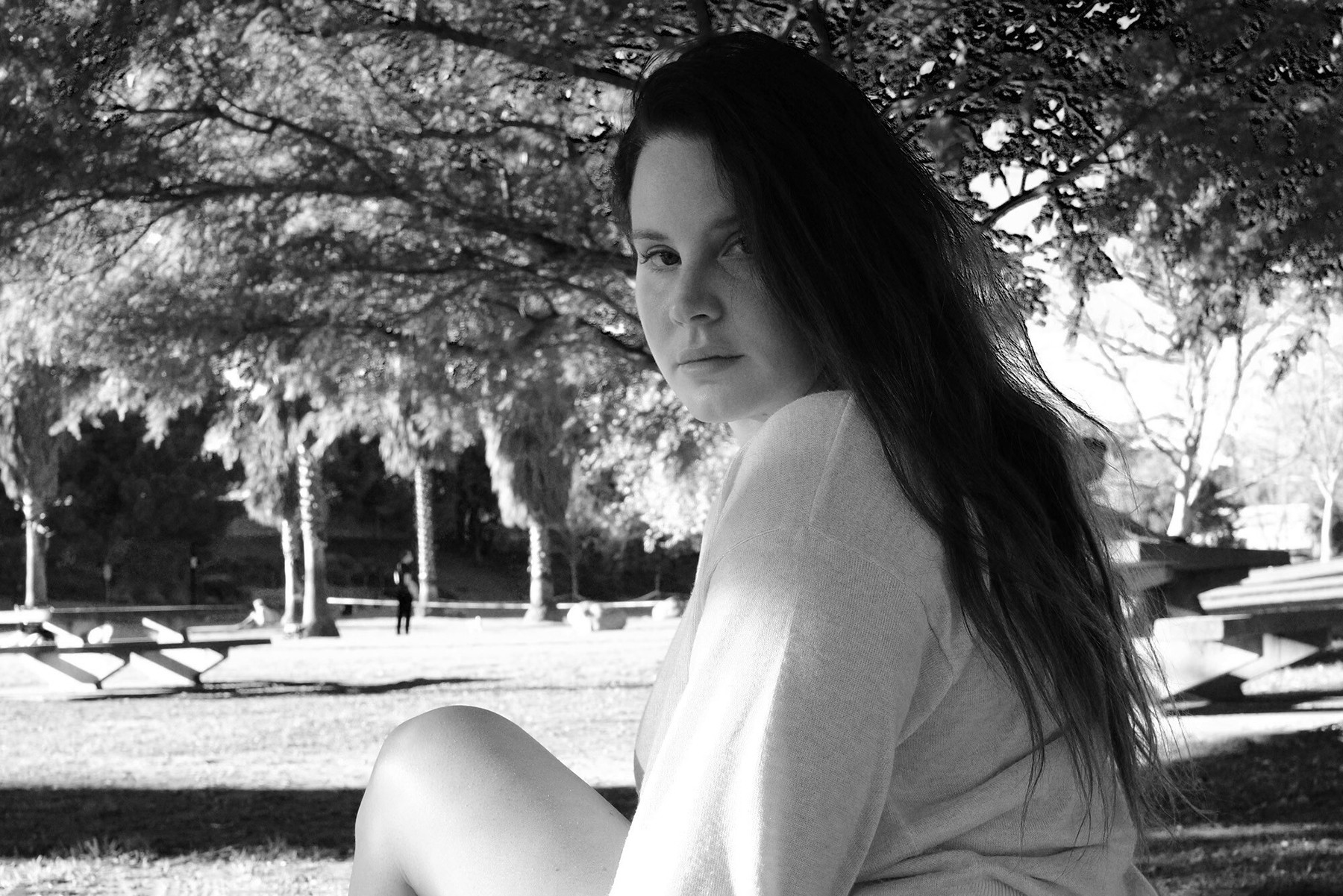 Lana Del Rey performing A&W, capturing the song's epic scope and Americana-infused melancholy.
Lana Del Rey performing A&W, capturing the song's epic scope and Americana-infused melancholy.
Lana Del Rey’s “A&W” is a sprawling, seven-minute epic that encapsulates her signature blend of Americana, melancholy, and pop experimentation, marking a high point in her recent discography. “A&W” is maximum Lana Del Rey: a sweeping musical journey that seamlessly transitions from the sunburned, SoCal folk rock of her recent albums to the hip-hop-infused pop productions of her early work. This ambitious musical scope is matched by an equally ambitious narrative, exploring themes of vulnerability, luridness, nostalgia, hopelessness, and dark humor. The song’s lyrical landscape is both personal and broadly American, delving into complex emotions and societal critiques. The song’s title itself, “A&W,” plays on the name of a classic root beer brand, used as shorthand for “American Whore,” demonstrating Del Rey’s masterful ability to bend American iconography to her own artistic will. “A&W” is a complex and rewarding listen, showcasing Del Rey’s growth as a songwriter and her continued exploration of American themes and musical styles, earning its place among the 500 greatest songs of all time.
Jefferson Airplane, ‘White Rabbit’
 Jefferson Airplane performing White Rabbit, capturing the song's psychedelic rock vibe and Grace Slick's iconic presence.
Jefferson Airplane performing White Rabbit, capturing the song's psychedelic rock vibe and Grace Slick's iconic presence.
Jefferson Airplane’s “White Rabbit” is a psychedelic rock anthem that brought acid rock to Middle America, becoming a defining song of the counterculture movement and Grace Slick’s signature track. The song, written by vocalist Grace Slick, was reportedly inspired by LSD experiences and listening to Miles Davis’ Sketches of Spain. Slick initially recorded “White Rabbit” with her previous band, the Great Society, before re-recording it with Jefferson Airplane, achieving mainstream success with the latter version. The lyrics of “White Rabbit” draw heavily on imagery from fairy tales like Alice in Wonderland, Peter Pan, and The Wizard of Oz, using these fantastical narratives to explore themes of drug use and altered states of consciousness. “Our parents read us stories like Peter Pan, Alice in Wonderland, and The Wizard of Oz,” Slick explained. “They all have a place where children get drugs, and are able to fly or see an Emerald City or experience extraordinary animals and people.… And our parents are suddenly saying, ‘Why are you taking drugs?’ Well, hello!” “White Rabbit” is characterized by its hypnotic bolero rhythm, its surreal lyrics, and Slick’s powerful and theatrical vocals, making it a quintessential psychedelic rock anthem and a deserving inclusion in the 500 greatest songs of all time.
Sister Nancy, ‘Bam Bam’
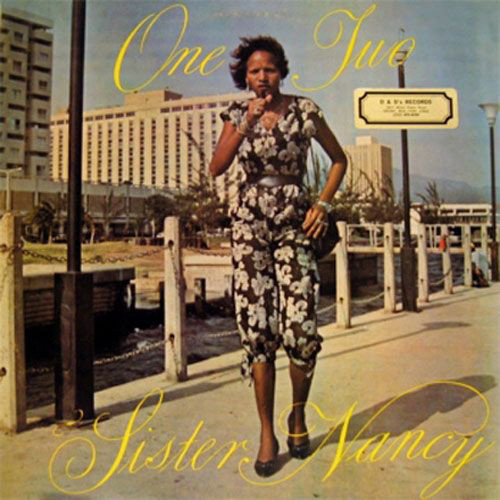 Sister Nancy performing Bam Bam, capturing the song's dancehall reggae energy and Sister Nancy's pioneering DJ style.
Sister Nancy performing Bam Bam, capturing the song's dancehall reggae energy and Sister Nancy's pioneering DJ style.
Sister Nancy’s “Bam Bam” is a foundational dancehall reggae anthem that showcases Sister Nancy’s pioneering DJ style and has become one of the most sampled tracks in reggae history. Sister Nancy (Ophlin Russell) was a prominent DJ (mic controller) for Kingston’s Stereophonic sound system in the late 1970s when she met reggae producer Winston Riley. She admired Riley’s serious approach to recording: “I really admired how he took recording serious. You couldn’t go into his studio and do any foolishness.” Their collaboration resulted in “Bam Bam,” Sister Nancy’s signature track and a defining song of early dancehall. “Bam Bam” is characterized by its booming yet bright sound, its tough but playful energy, and Sister Nancy’s confident and assertive DJ style. The song’s infectious rhythm and catchy hook have made it a favorite among DJs and producers, leading to extensive sampling by artists across genres, from Lauryn Hill to Kanye West. “Bam Bam” is a testament to Sister Nancy’s groundbreaking contributions to reggae and dancehall music and a deserving inclusion in the 500 greatest songs of all time.
Missy Elliott, ‘The Rain (Supa Dupa Fly)’
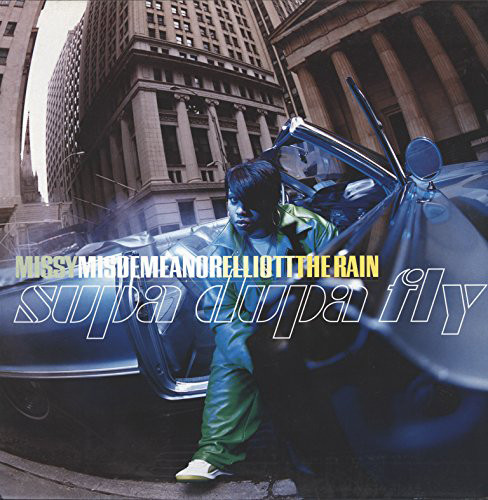 Missy Elliott performing The Rain (Supa Dupa Fly), capturing the song's innovative hip-hop production and Missy Elliott's groundbreaking style.
Missy Elliott performing The Rain (Supa Dupa Fly), capturing the song's innovative hip-hop production and Missy Elliott's groundbreaking style.
Missy Elliott’s “The Rain (Supa Dupa Fly)” is a groundbreaking hip-hop track that solidified Missy Elliott and Timbaland’s status as innovative producers and launched Missy Elliott into superstardom as a solo artist. Prior to “The Rain,” Elliott and Timbaland had already made a significant impact on hip-hop and R&B production with their distinctive rhythmic style. Missy Elliott had also gained recognition through high-profile features, introducing her unique rap style to wider audiences. However, “The Rain (Supa Dupa Fly)” was a true revelation. The song’s ghostly sample of Ann Peebles’ “I Can’t Stand the Rain,” its memorable Beenie Man misquote (“Who got the keys to the jeep?”), and its twitchy yet sleek beat were unlike anything heard before. “The Rain (Supa Dupa Fly)” propelled Missy Elliott to stardom and established her and Timbaland as the producers to beat in the hip-hop and R&B landscape. The song’s innovative sound, Missy Elliott’s unique rapping style, and its iconic music video have made it a landmark track and a deserving inclusion in the 500 greatest songs of all time.
Toto, ‘Africa’
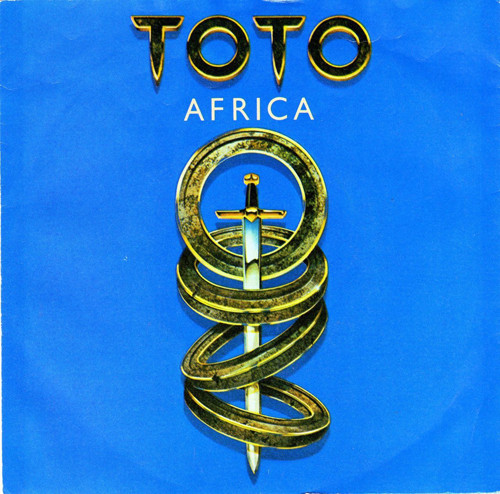 Toto performing Africa, capturing the song's yacht rock vibe and enduring pop culture appeal.
Toto performing Africa, capturing the song's yacht rock vibe and enduring pop culture appeal.
Toto’s “Africa” is a yacht rock touchstone that has transcended genre classifications and become a ubiquitous pop culture phenomenon, characterized by its instantly calming synthesizer riff and soaring chorus. Despite its immense popularity, Toto drummer Jeff Porcaro humorously acknowledged the song’s lyrical ambiguity in 1985: “It’s funny. We thought ‘Africa’ was bold, and it did pretty good, but lyrically it didn’t make a dime of sense.” However, the song’s lyrical sense is arguably secondary to its sonic appeal. The instantly recognizable synthesizer riff, played on a Yamaha GS-1 “dialed in [to] those kalimba, marimba kind of sounds,” as Porcaro described, carries much of the song’s emotional weight and atmosphere. Coupled with the soaring chorus, the riff creates an undeniably calming and uplifting listening experience. “Africa” hit Number One on the charts and has continued to live on in popular culture, experiencing a resurgence in popularity in recent years. In 2019, Weezer’s affectionate cover version made “Africa” ubiquitous once again, introducing it to a new generation of listeners. Toto reciprocated the tribute by covering Weezer’s “Hash Pipe,” further cementing the song’s enduring appeal and its place among the 500 greatest songs of all time.
Migos feat. Lil Uzi Vert, ‘Bad and Boujee’
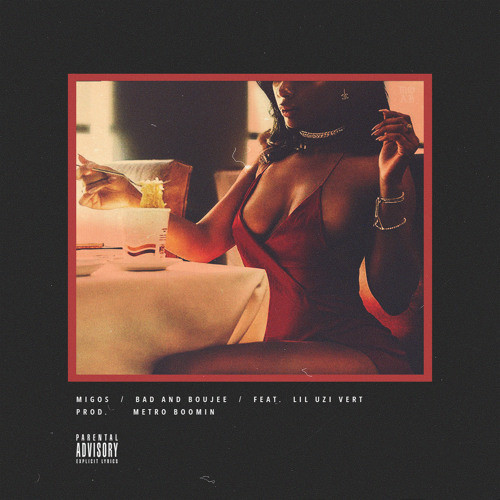 Migos and Lil Uzi Vert performing Bad and Boujee, capturing the song's meme-rap energy and trap anthem vibe.
Migos and Lil Uzi Vert performing Bad and Boujee, capturing the song's meme-rap energy and trap anthem vibe.
“Bad and Boujee” by Migos featuring Lil Uzi Vert is a meme-rap anthem that captured the zeitgeist of the social media era, becoming a cultural phenomenon and a defining track of the trap genre. If cellphones gave rise to ringtone rap, social media gave us meme rap, and “Bad and Boujee” became its keynote anthem. The song’s instantly catchy “Raindrop, drop-top” hook inspired countless internet memes, Twitter jokes, and Vine clips, even making an appearance at the 2017 Women’s March on Washington, D.C., demonstrating its broad cultural impact. Migos member Offset wrote the song’s hook during a period of personal turmoil. As he told Rolling Stone, “I had some little situations going on with life, family stuff going down, so I went downstairs to record. Sometimes that’s the best time to get music off — you might be mad, make some crazy shit.” This raw emotional energy translates into the song’s hard-hitting trap sound and its unapologetic celebration of wealth and status. “Bad and Boujee” is a testament to the power of meme culture to propel music to viral success and a deserving inclusion in the 500 greatest songs of all time.
Conclusion:
Rolling Stone’s updated list of the 500 Greatest Songs of All Time serves as a vital and evolving document of popular music history. Reflecting the changing tastes and expanding genres of contemporary music, this list acknowledges both the enduring power of classic songs and the exciting innovations of new artists. From timeless ballads to groundbreaking hip-hop tracks, from stadium rock anthems to intimate folk songs, this collection represents a diverse and inclusive vision of musical greatness. It is a testament to the power of song to shape culture, evoke emotions, and connect generations. Exploring this list is an invitation to delve deeper into the rich tapestry of music history and to discover, or rediscover, the songs that have shaped our world. Whether you are a seasoned music aficionado or a curious newcomer, the “500 Greatest Songs of All Time” offers a compelling and insightful journey through the soundtrack of our lives.
